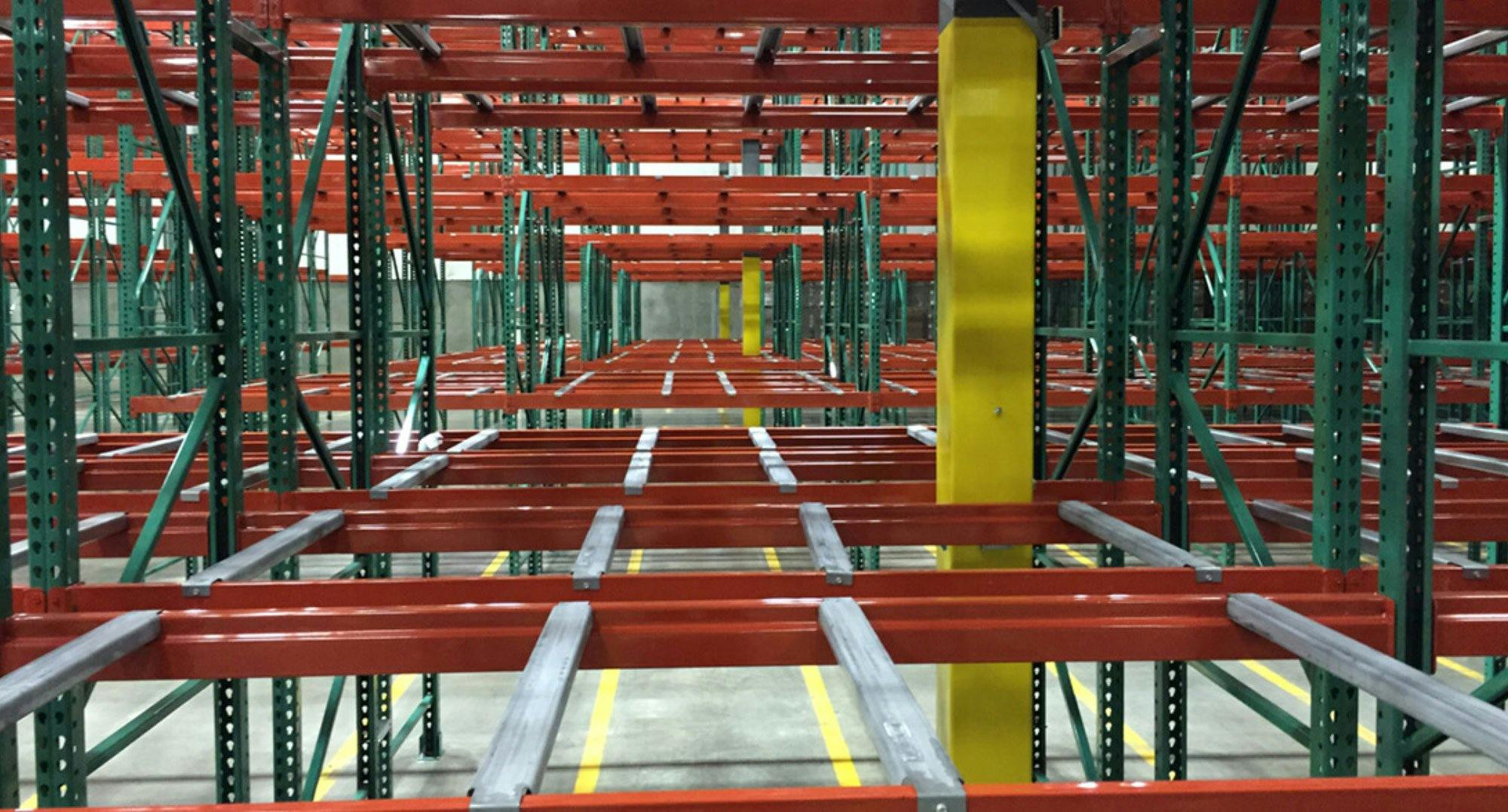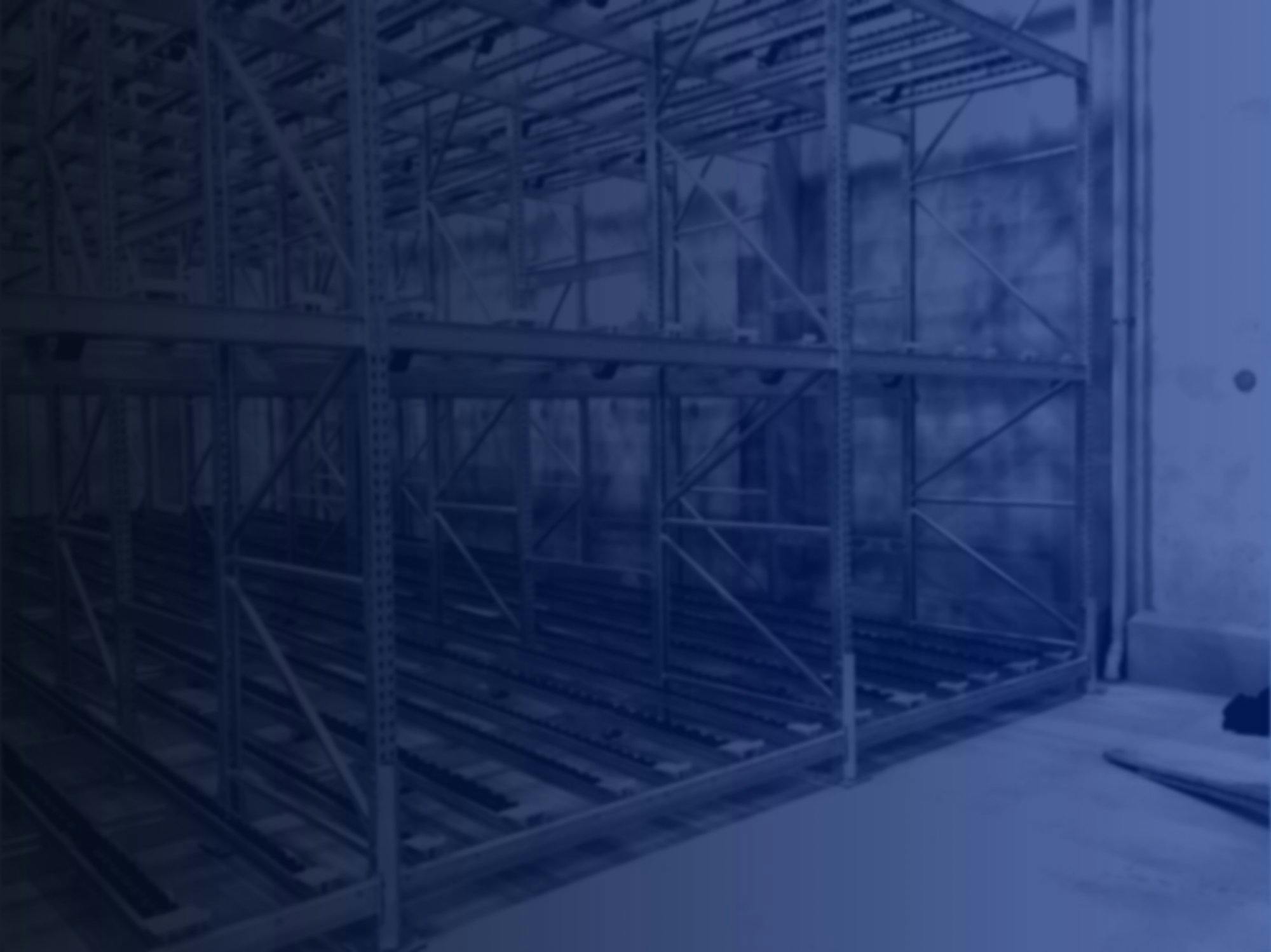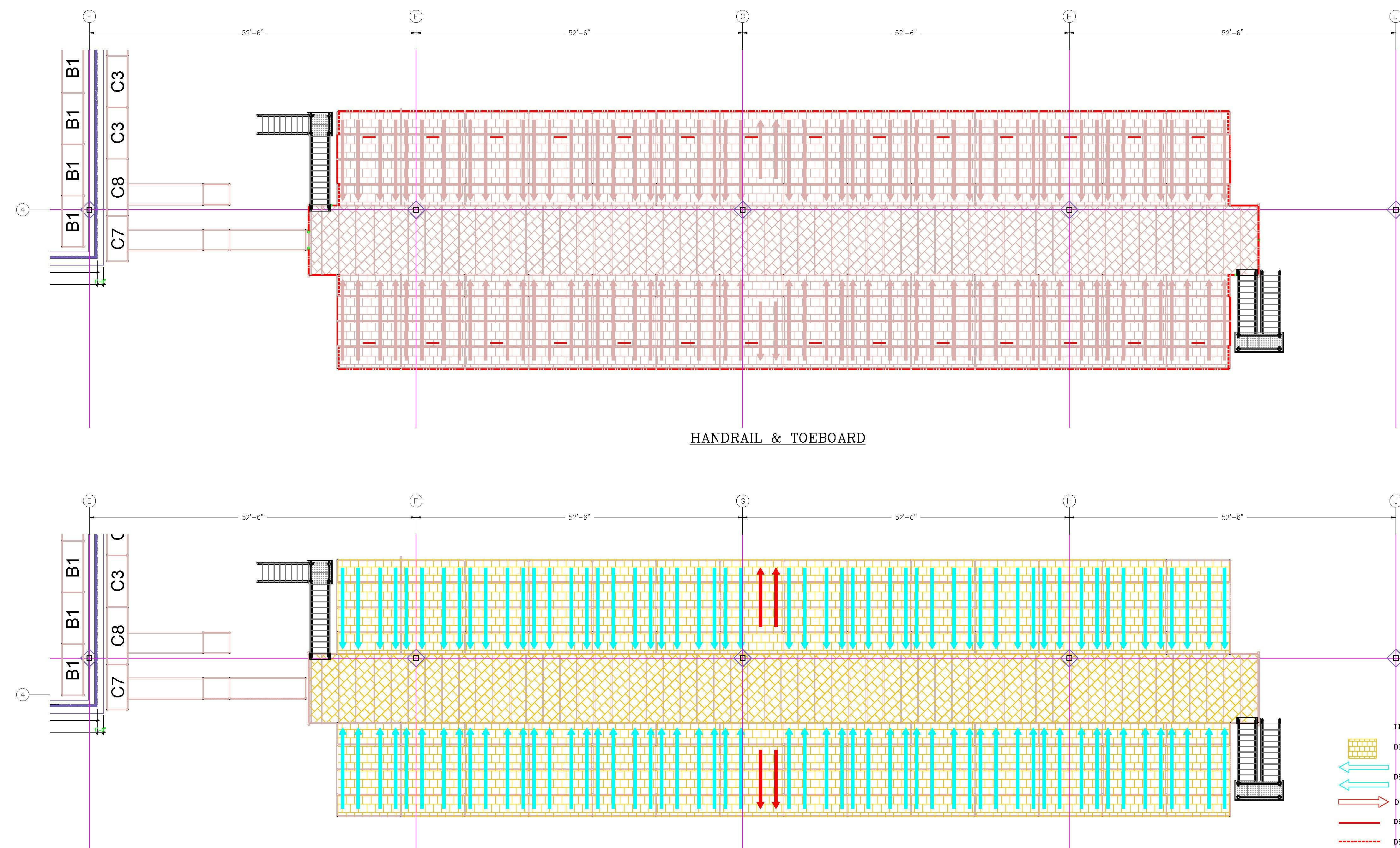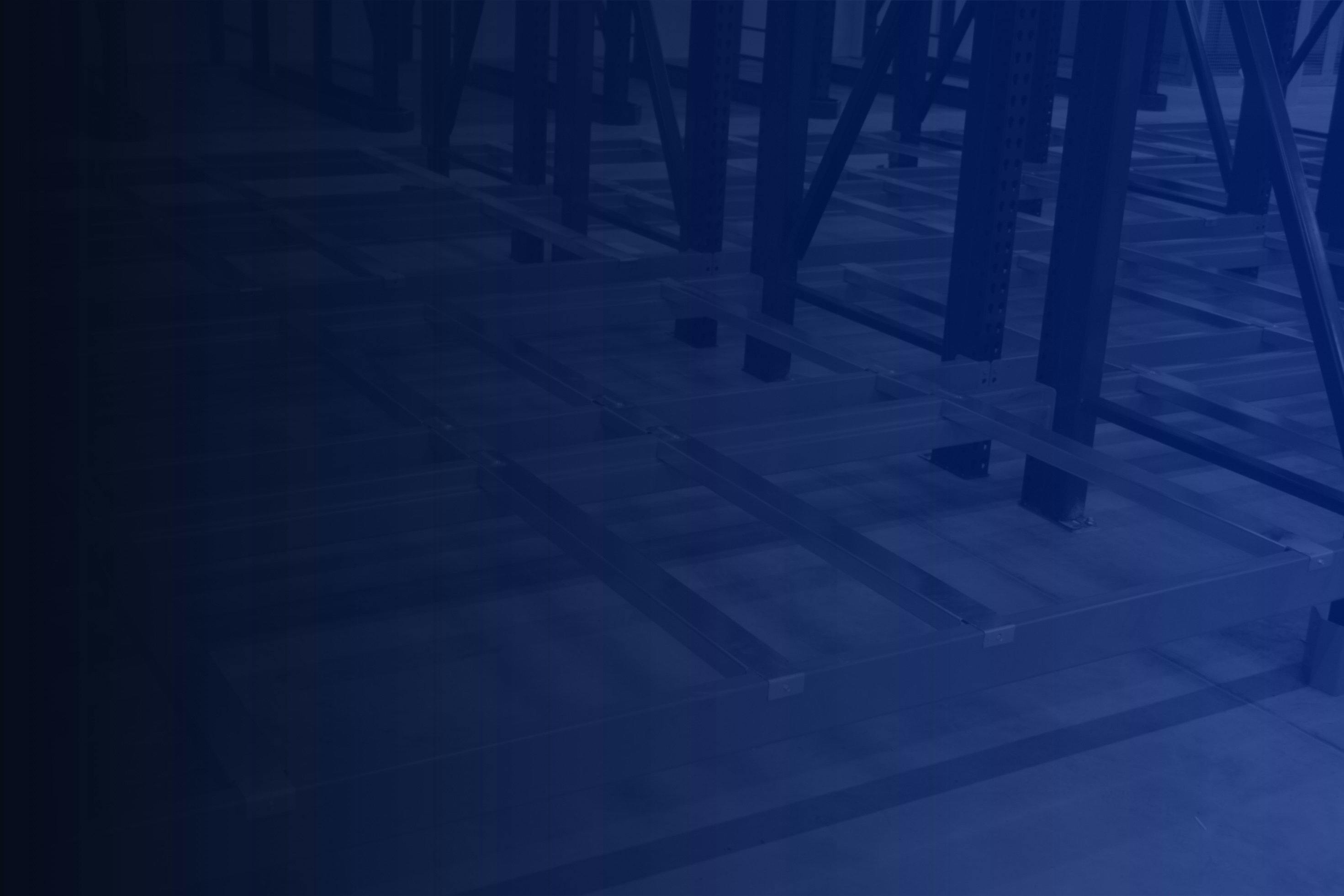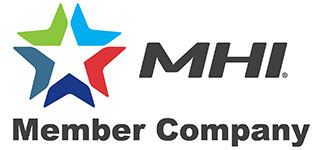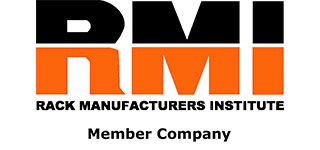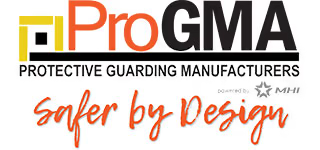Is A Pick Module System The Key To Higher Order Fulfillment Rates?
Pick modules are versatile, essential pieces to every organized warehouse, industrial space, or distribution facility. For more information on how to get your own, custom-made system, reach out to our team of experts!
Contact an ExpertScroll Down
Back To Top
Module System
-
Introduction
-
Common Terminology & Definitions
-
How to Know if You’re Getting Quality Pick Module Subcomponents
-
How to Choose the Best Pick Module Manufacturer
-
Factors to Consider When Designing Pick Modules
-
Will Pick Modules Work in My Industry?
-
Can Pick Modules Make Manufacturers More Lean?
-
Pick Module Operations in a World with COVID-19
-
Pick Modules vs Traditional Racking Products
-
Top 5 Pick Module Benefits For Staying Competitive
What You Need to Know About Pick Modules
Pick modules are large and relatively complex structures designed to facilitate storage and order fulfillment of bulk items, such as full and partial pallet loads, and single picks—often referred to as “eaches.” It is this fundamental characteristic of the pick module, the ability to handle a broad diversity of products and order types, that makes it such a unique and integral part of today’s high-volume distribution center operations. At their core, pick modules are constructed from the most basic pallet racking components, namely uprights and beams that are common to just about every bulk material handling and pallet storage system. A wide variety of subcomponents can be integrated into these basic rack structures and combined with advanced software and control technologies to facilitate the high-speed and accurate product movement, inventory control, and order fulfillment functions essential to today’s e-commerce world.
While there is no such thing as a standard pick module, they are generally customized for a particular facility or application, there are some common traits between them. A typical pick module is a multi-level structure that takes full advantage of a building’s cubic space. Pick modules may contain and handle hundreds and even thousands of SKUs (stock keeping units). Larger distribution centers often have multiple pick modules under one roof, each dedicated to particular product types or to common characteristics of a product set such as their propensity to be ordered (fast movers versus slow movers), their value (commodity items versus higher-priced) their fragility (perishable versus hard goods) and their size.
Pick Module Categories
Most used pick module subcomponent systems:
- Case Flow Lanes – often called, carton flow lanes, these allow pickers to move and pick one box, case, or individual SKU versus a full pallet.
- Pallet Flow Lanes – allows pickers to use a full pallet as the base for picking full and partial cartons, all with a full pallet waiting right behind the current one for immediate replenishment.
- Reserve Rack – component in a standard rack system which provides reserve product storage.
- Push Back Rack – allows for dense product storage within reserve racks, while always keeping product available at the pick face.
- Pallet Return Lanes – usually shallow lane pallet flow allowing for the removal of empty pallets for easy pick up in lift truck aisles.
- Conveyor – power and gravity are used in combination to aid in the transport of products from their storage location to the packaging and shipping areas, and for refuse removal from the work areas.
Common Problems Solved by Pick Modules
When we think of common problems across warehousing, e-commerce, and manufacturing industries, we often think about about increasing picking percentages, saving space, minimizing labor expenses, and improving worker safety. Pick modules have a role to play in solving all these issues.
How to Maximize Picking Efficiency
While many picking modules are similar, the effectiveness shows in how they're implemented in the space. So, the first step to maximizing picking efficiency is knowing your goals and knowing your space. Pallet flow lanes are an essential choice if you're shipping or storing large products. Whether you're dealing with pallets of flooring, traditional retail products, or building supplies, pallet flow lanes will get your product from storage to loading bay efficiently.
Using Pushback Racks to Save Space
Space is always an issue. Whether it's finding enough space for people and product to move safely or maximizing space to cut walk time and maximized products. With basic pallet picking setups you can gain about 35% more space using a six-foot-deep racking system. That's 35% more room for more product, expanding production lines, or find space to add an employee work station. To increase space saving more, which means even more space for product and people, push back racks allow for even more storage, eliminating unnecessary lanes when not in use. This extra space will help you keep people safe, expand inventory, and effectively use your space.
Organization To Minimize Labor Expenses
Picking modules are only part of the answer. Whether you're using reserve racks, pallet return lanes, or structural racks, creating a system that works for you with those picking modules is how you save money and time. Labor expenses are almost always the biggest part of a company's budget. So, finding ways for employees to safely spend less time doing tasks means an increase in productivity and a decrease in expenses. For example, any of our picking modules arranged using cellular manufacturing methods will cut walking time for employees and pair like items in easy to find locations.
Best Safety Practices Save People and Money
How your warehouse, manufacturing facility, distribution center, or e-commerce hub is setup makes a difference in worker safety. In locations where workers are often doing physical labor of picking up packages or products, working with and around heavy machinery, using pick modules to safely store products and make them easily accessible is an easy answer to minimizing workplace accidents.
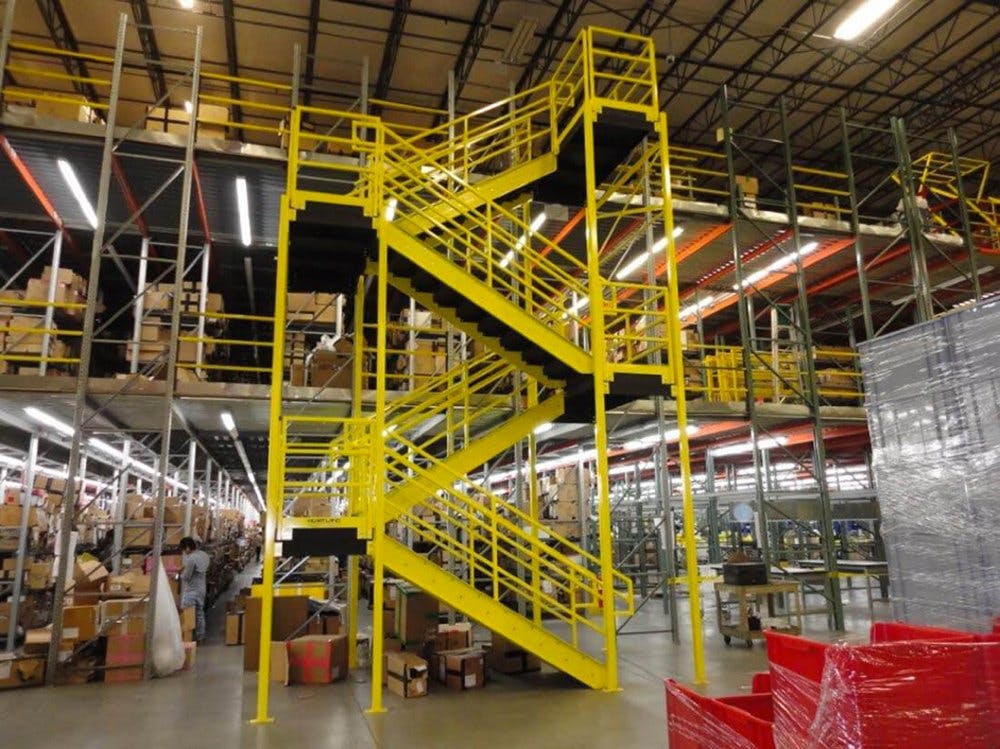
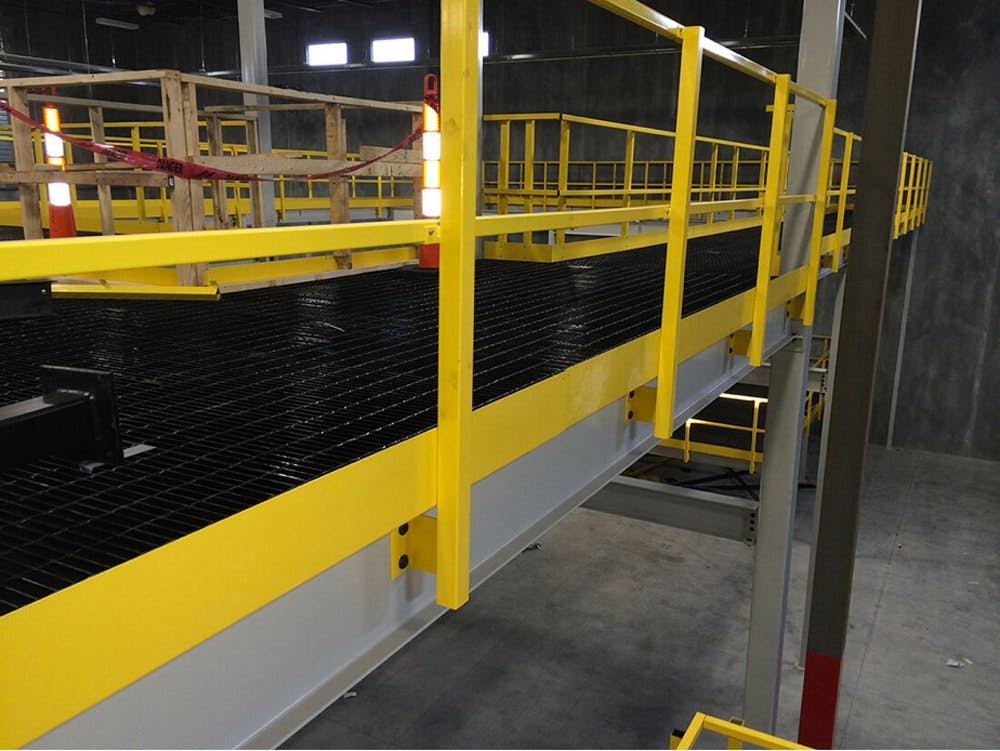
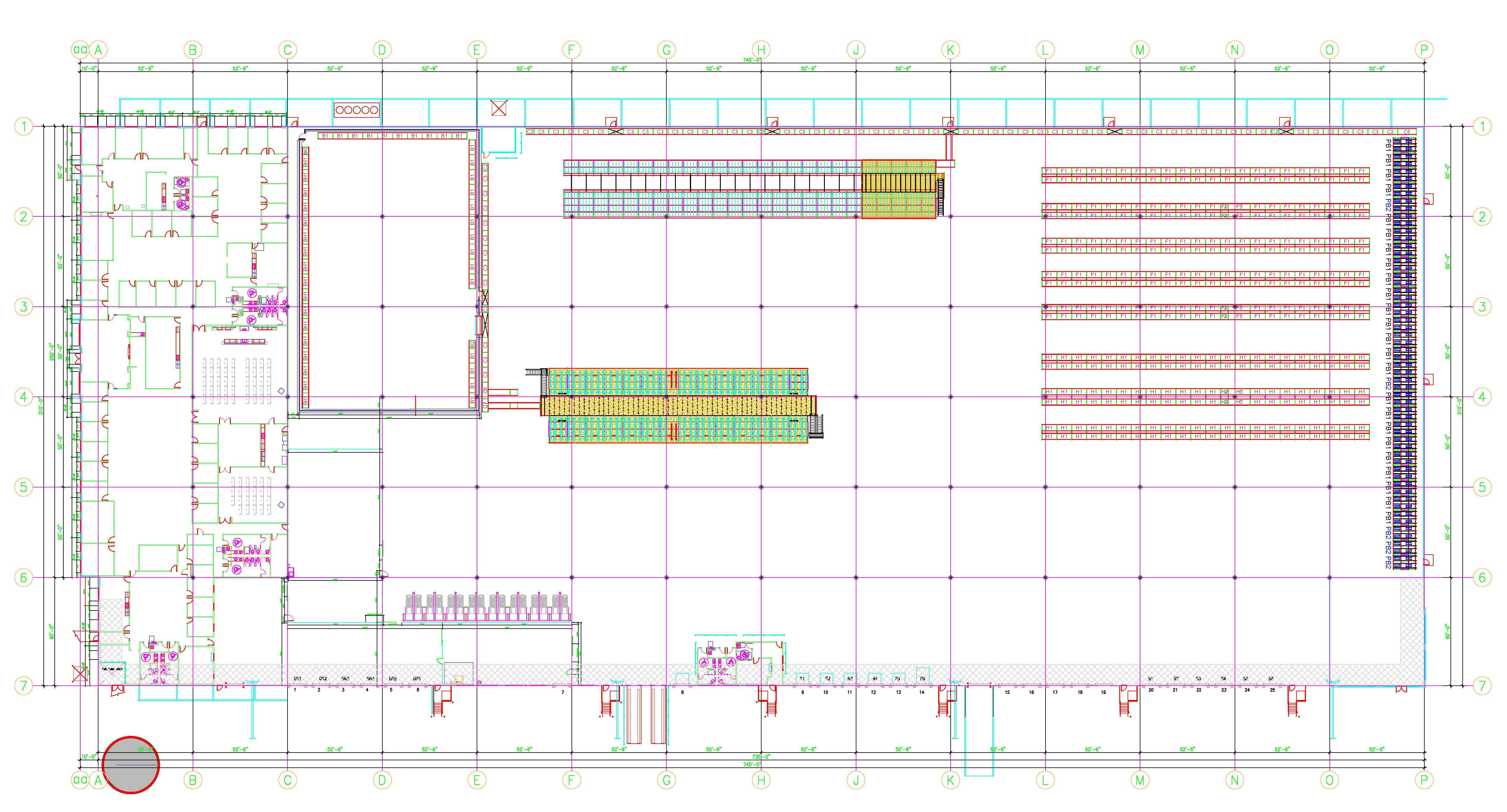
There’s a lot of information out there, knowing some common terminology may help you in your search!
Catwalk Beams
These metal beams are a key load bearing component for any vertical or catwalk system. Choosing catwalk beams from a single manufacturer helps ensure pieces fit with all system components.
Cross Aisle Bracing
One of the two primary directions on a storage rack. This is bracing that goes corner to corner, across the aisle of the principal handling equipment aisle. This is also referred to as the transverse direction.
Distributed vs Point Loads
Point loads concentrate all the weight of an object on a single point of the support surface, while distributed loads spread the weight of a load across a larger surface area. The ideal load is unique the project, material, and surface.
Down Aisle Bracing
One of the two primary directions of the storage rack. This is bracing that goes lengthwise along an aisle, not on the wall side. This is also referred to as the longitudinal direction.
Handrail safety posts
Handrail posts are used during temporary construction and in permanent facilities to keep employees safe. OSHA safety requirements use top rails and either a mid rail or intermediate vertical members. We can work with you to make sure all handrails meet OSHA guidelines.
Pick Face/SKU
SKU is an acronym for stock keeping unit. It refers to a code (sometimes scannable) that is on the unit. It’s usually part of an inventory or shipping system. The pick unit is the actual object. So, the pick face is the labeled front of the unit.
Platform
A raised flat surface, usually accessible by stairs or catwalk.
Take Away Conveyor
These conveyors are key to any e-commerce or distribution facility. With adjustable inclines and smooth seems, packages and materials slide smoothly down. When paired with a pick module system, these cut down on employee walk time and improve long-term safety by easing repetitive motion back strain of loaders.
Toe-board/kick plate
Toe-boards are low protective barriers used when workers may be exposed to falling tools. Toe-boards are included on steps, walkways, landings, and guard rails.
Trash Conveyor
Trash conveyors aren’t just for trash. While sorting facilities do often use a version of these, they have uses in many other industries. Trash conveyors use a moving belt surrounded by guard rails. Paired with a sophisticated pick module system, these will continue to improve efficiency and prevent stock loss.
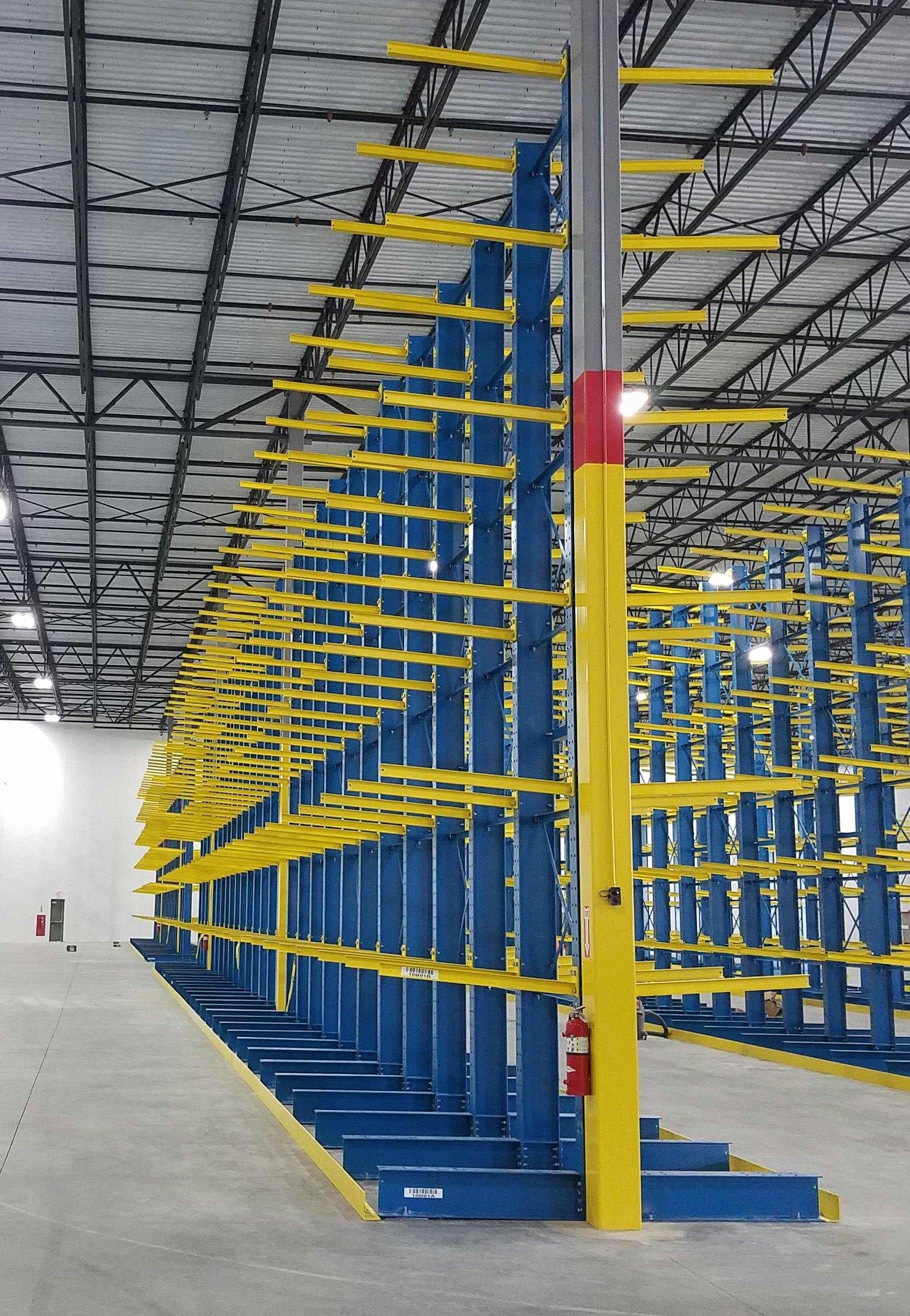
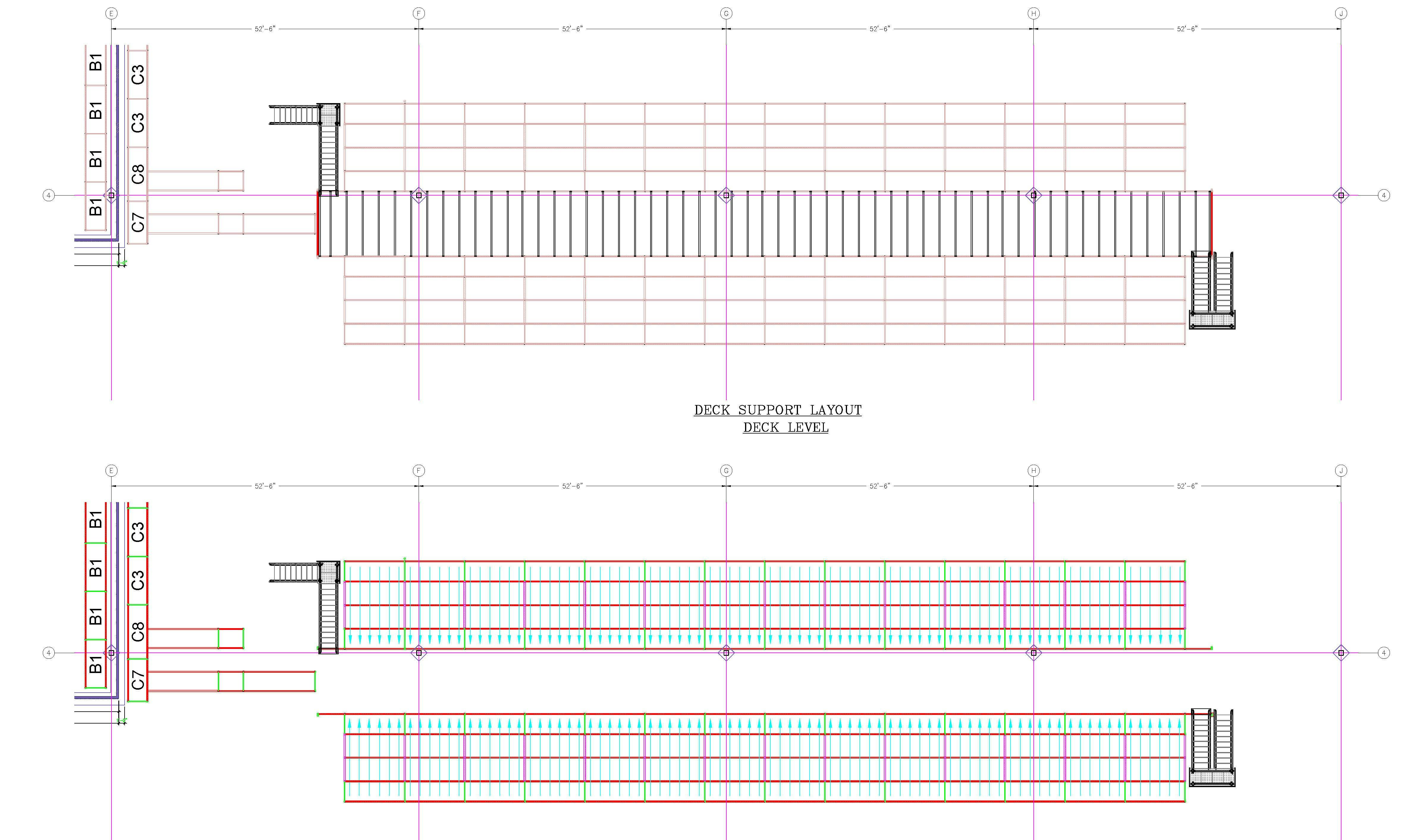
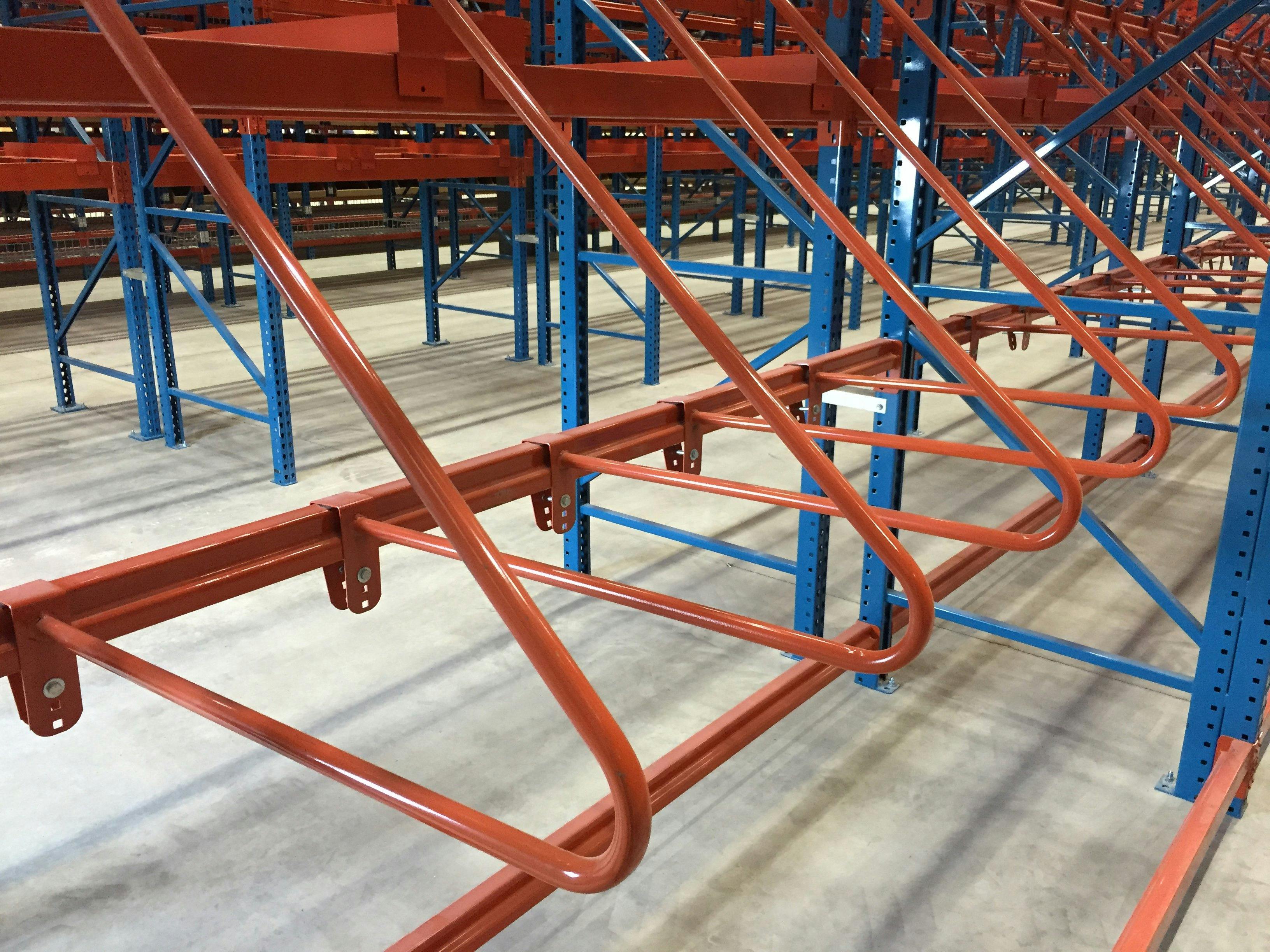
We know that a new pick module system is substantial investment, which is why choosing a quality product is essential. At Heartland Steel we offer our our SpaceRAK engineered products.
American Made Steel Products
SpaceRAK products are made with American made steel, in America. Our highly trained and experienced teams create pick modules, stairs, platforms and mezzanines, and safety products built to last. From the type of steel to the final application of paint, every SpaceRAK product has been tested, improved, and created to withstand any type of work environment.
Why SpaceRAK
SpaceRAK products are versatile, high quality, efficient, and compliant. Plus, you'll always get to speak with an actual person when you call—whether you're in the design phase, need support after installation, or are looking to modify your system.
- Versatile - Extensive design and material options fit every type of application and facility
- High Quality - SpaceRAK designs adhere to Rack Manufacturers Institute standards
- Efficient - Responsive sales and support teams, multiple shipping facilities, and quick-ship availability for common products translate into significant savings
- Compliant - Your system can be designed to meet IBC, OSHA and all other codes and standards
We want to partner with you to improve your facility efficiency, minimize unnecessary time on the floor—for people and product—, and ultimately lead to higher order fulfillment rates.
Contact us for a quote today!
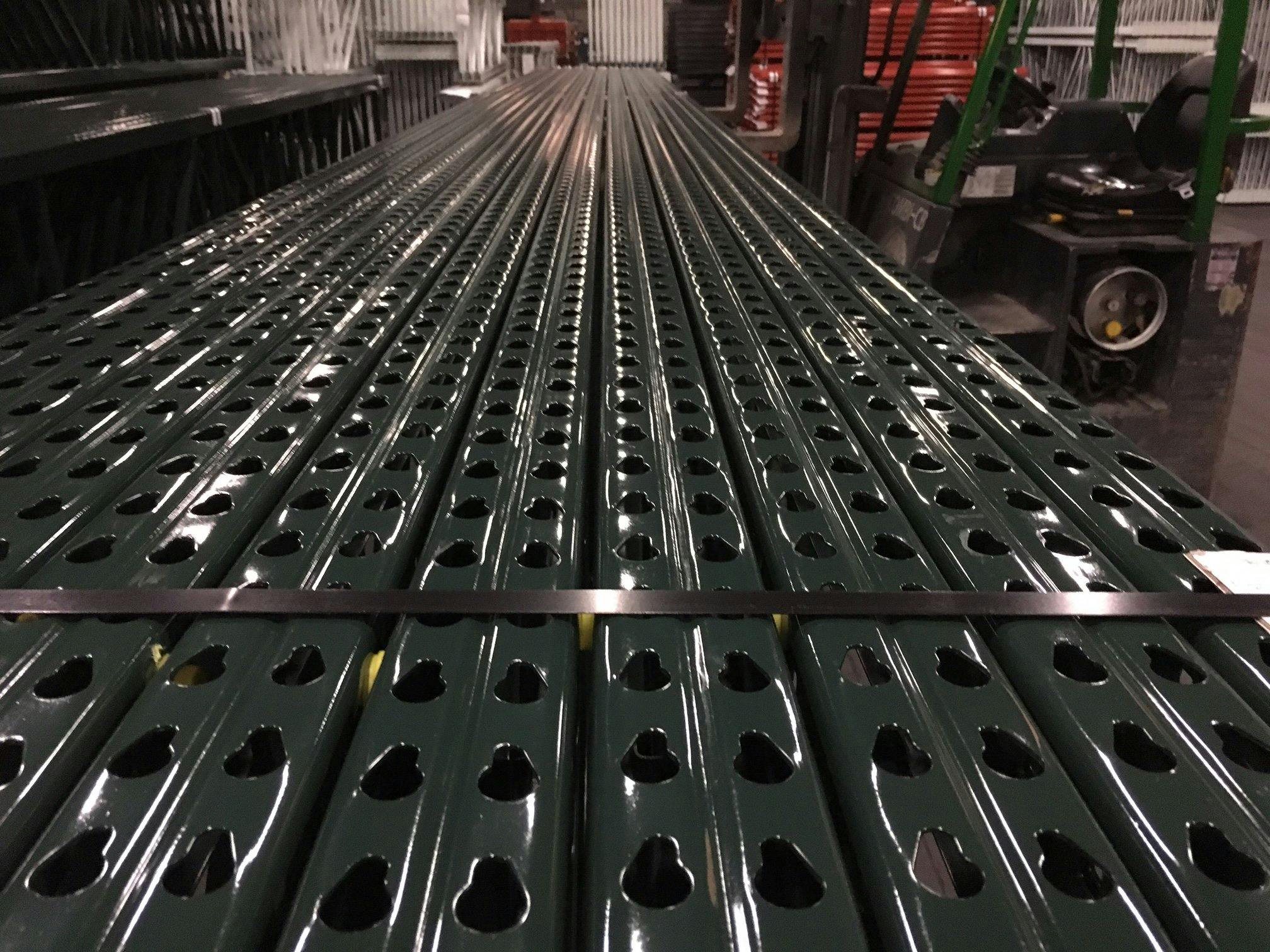
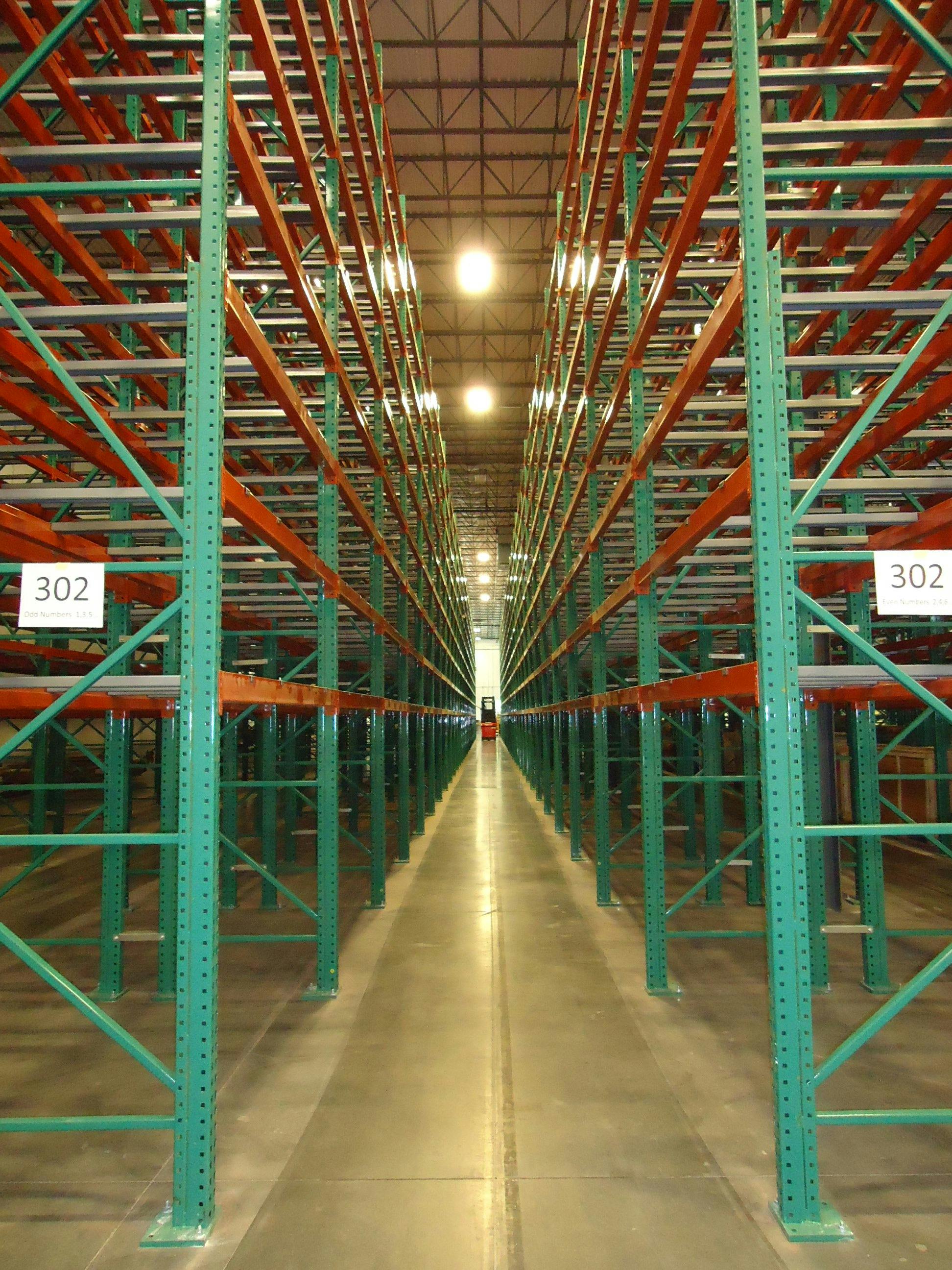
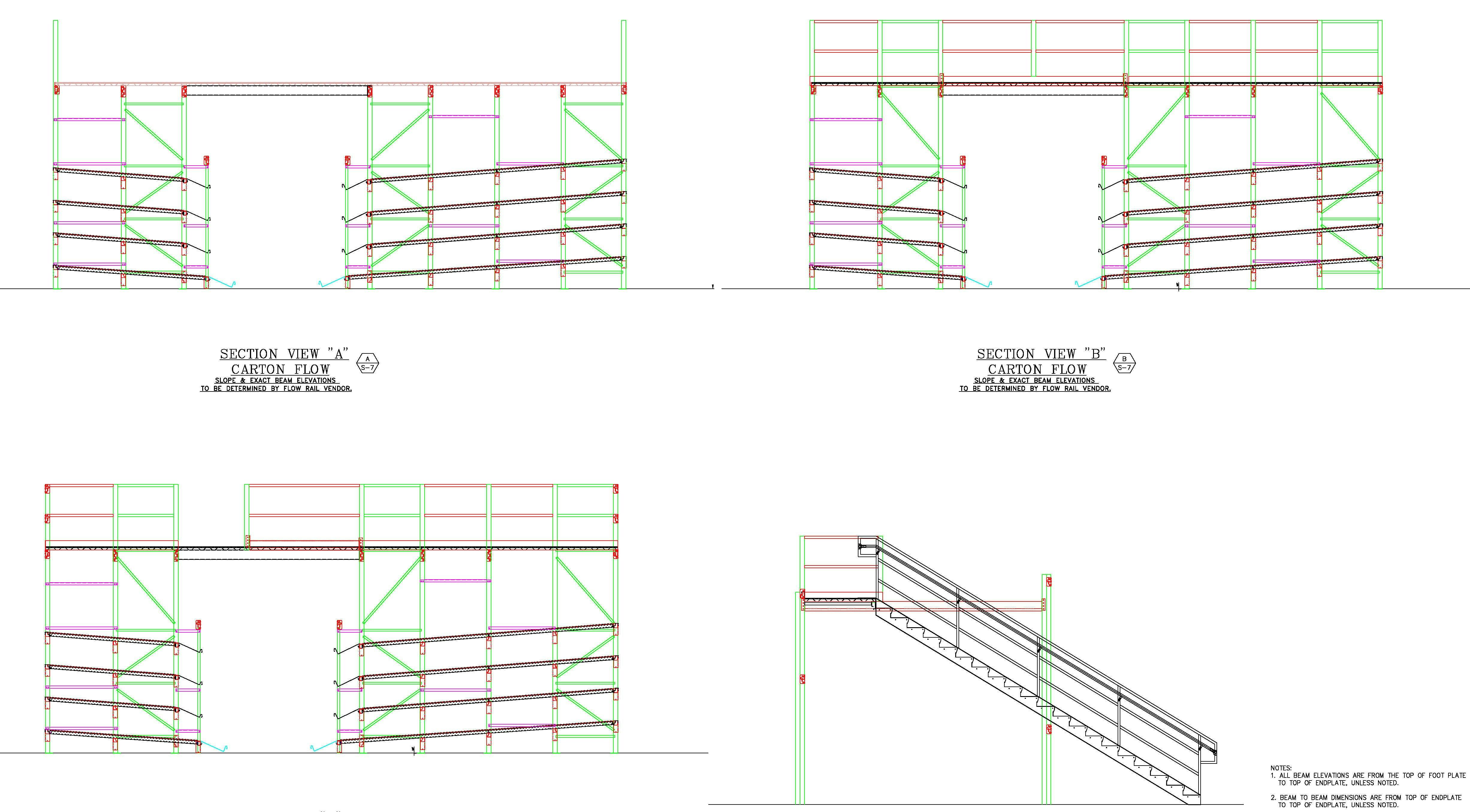
Now you've seen how pick modules can be used across industries and scaled up or down to fit any operation, do you think a pick module system is right for your operation?
The Benefits of Design-Build Manufacturer
As you look at different pick module producers you'll encounter fabricators and design-build manufacturers. Fabricators are often less expensive, but that's because they create modules from someone else's designs and rarely take responsibility for how the whole system works together. The discount you receive is the price of dealing with a potentially flawed or problematic system on your own.
A design-build manufacturer deals with the whole process, from consulting with the client to installation of the end product. This means that they're invested in how well the system comes together in the planning process and the quality of the build. A design-build manufacturer, like Heartland Steel Products, is a vested partner in your project.
Partners—Not Suppliers
When you go with a big-box company, the end result often includes modifications on install, components that don't quite fit the space, and more "having to make do" than you'd expect for the price. When you choose an American based and made company, like Heartland Steel, you get the benefit of multiple locations for quick shipping and regional knowledge with the feel of smaller company that truly knows every client it does business with. Heartland Steel creates a partnership with every client. From engineering specialists who use CAD to create the right plan for your space and needs, to the hard-working manufacturing employees who use American made steel and commitment to excellence in every cut and weld.
Multiple Locations—Singular Purpose
Heartland Steel's four locations across the US let us serve you quickly and efficiently. Our four locations use American made steel, craftsmanship, and high standards to produce each of our product offerings—from pick modules to OSHA standard meeting safety equipment. Our employees work to create customer relationships that are individualized, dedicated, and focused on being responsive, proactive, and caring. And we have distributors across the country. So, whether distributor works with our Lodi, CA; Marysville, MI; Marlette, MI; or Harrison, OH manufacturing plant you'll get responsive and helpful customer service and a quality product every time.
A focus on values also lets us double down on our focus areas: safety, quality, and continuous improvement. Whether it's ensuring every part of a custom system works for your facility or changing paint sourcing to give you a better product, we're involved with every step from creation to completion.
So, reach out to get a quote or to design and build your custom pick modules today!
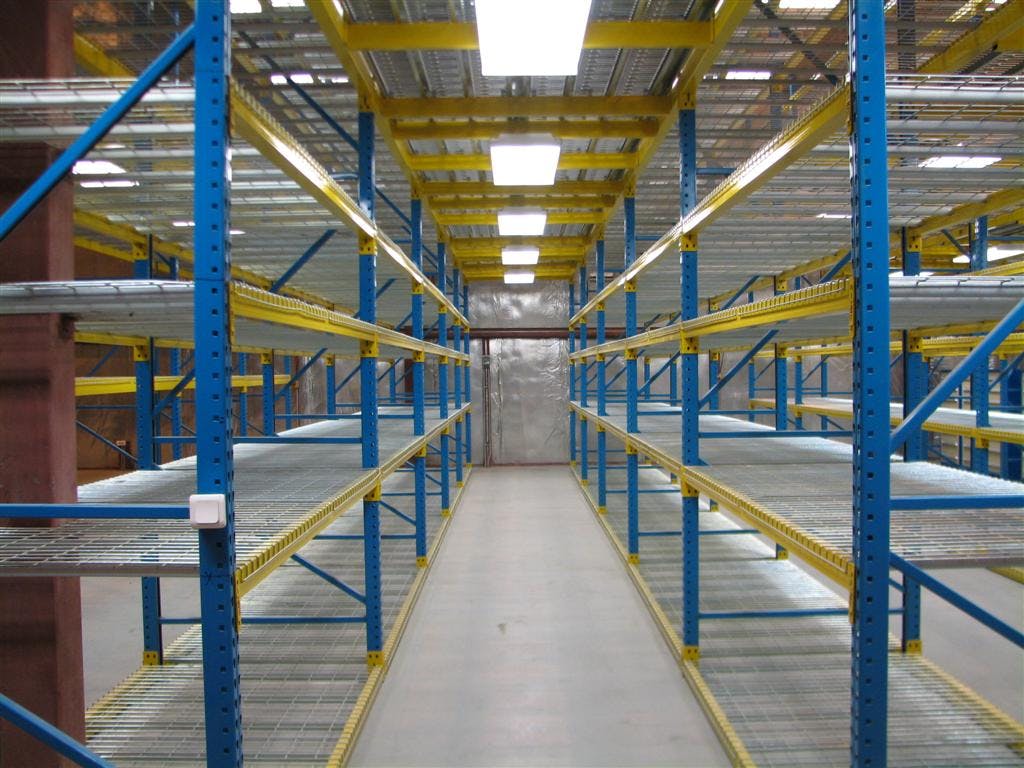
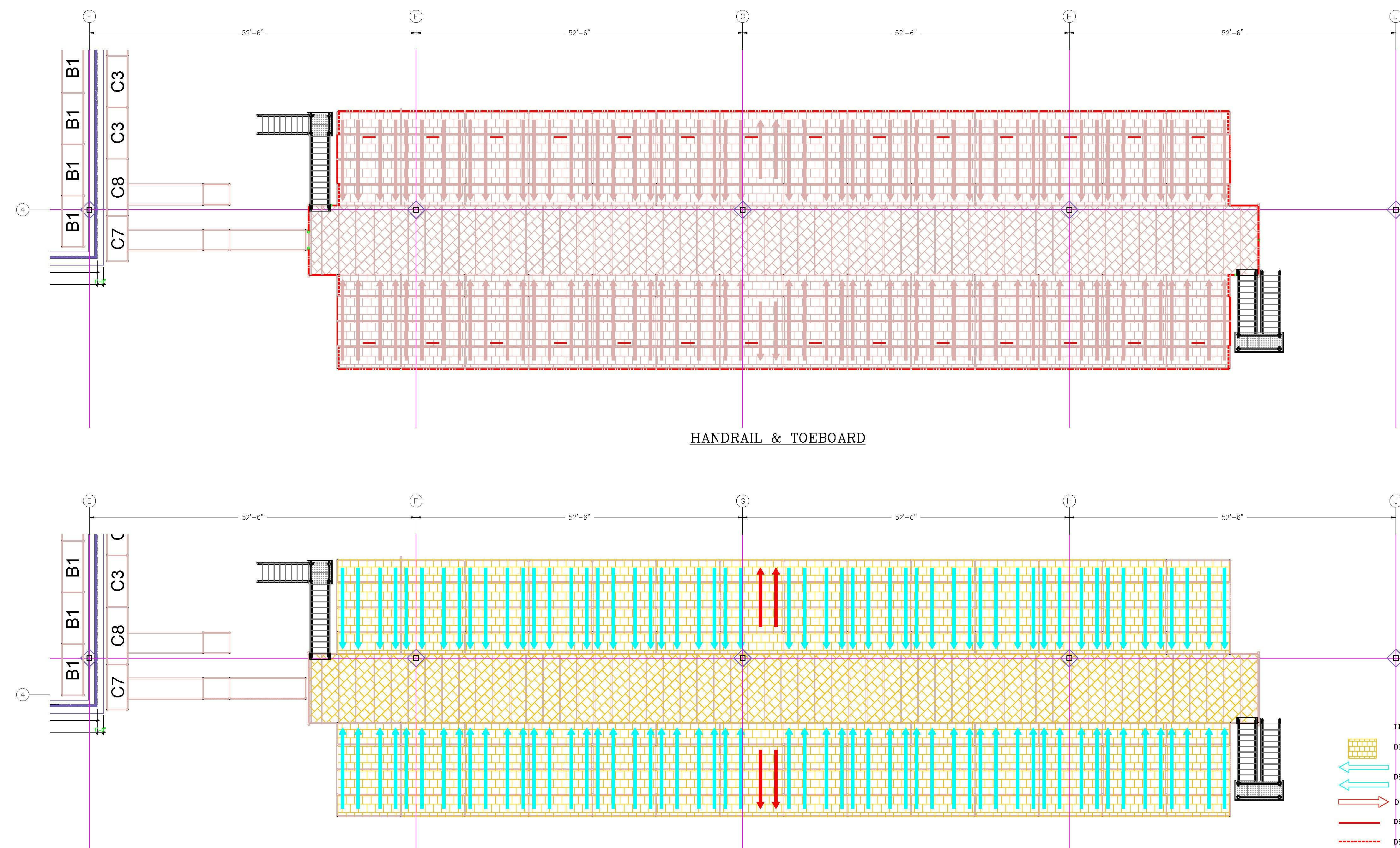
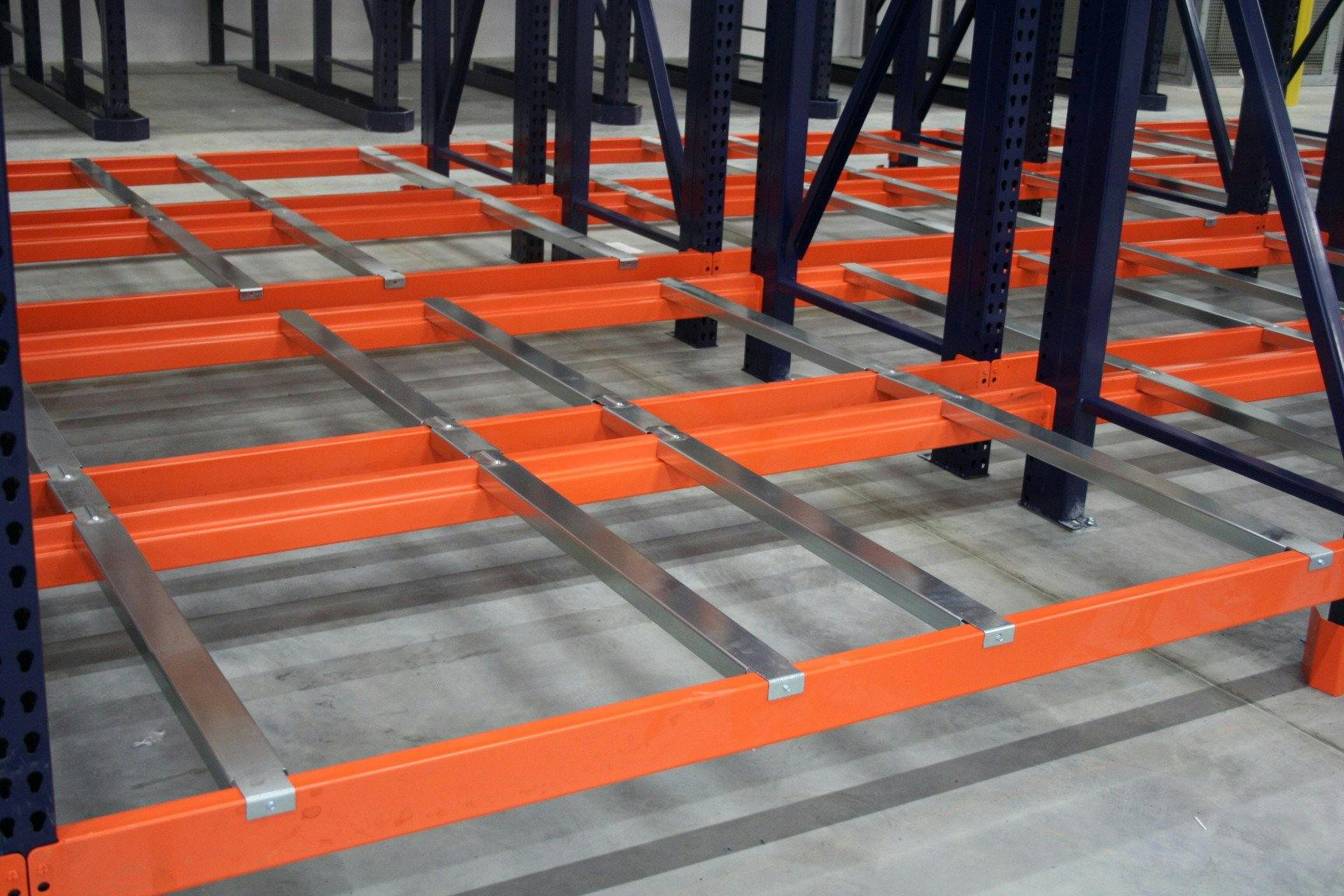
You’ll need to consider several things when designing your pick module setup. Our team of experts usually approach designing a pick module system by evaluating how you use your space, your racking and access needs, and how you're implementing proven logistic and organizational methods.
Research First, Design Second
The first factor for designing a pick module system is assessing what your needs actually are. You have to do the research. Whether that's looking at inventory movements to see what's going in and out, and when, or assessing what actually needs to be stored, or looking analyzing client demand, taking the time to work through actual needs will make all the difference in efficiency and increased revenue.
Research Informed Design Makes Room for Innovation
One of the biggest issues in creating large inventory systems with pick modules is when the design phase begins with someone's "vision" for a space. Inevitably, this vision won't take all day-to-day needs and issues into consideration. And it may end up being a design based on aesthetics, rather than use. For anyone in warehousing, distribution, e-commerce, and retail doing the initial research to figure out what your top needs are will make your system more efficient and save you money by eliminating modules and sections you won't fully use.
"Many feared in the early days of design research that it would lead to cookie-cutter design. The opposite is now known to be true—research informed design is smarter design and leads to more innovation during the design process."
-Stefnee Trzpuc, CID, EDAC, LEED AP
Innovation comes in after the research is done. When you truly know your needs you can think constructively and strategically to look for new ways for pick modules to best suit your inventory and logistics schedule.
Assess Your Space
Before considering racking and after thinking through what your end client needs you to deliver, you'll need assess your space. The heights of your ceilings will affect clearances for machinery, OSHA safety standards for aisle access, and the type of racking you'll choose. You'll also need to take into account the overall size, angle of walls, and any intersecting buildings or walls that change the size and shape of the space you're working with. If you're dealing with an odd shaped building or room, you might want to consider incorporating push-back racks, which are space efficient even if they need to be set up away from the perimeter of a space. For storing archival or museum items, you'll need to assess how materials will interact with your building's temperature and humidity levels.
Racking For Every Material or SKU
There is a type of racking to suit every product, material, or packaged SKU. In a traditional warehouse space, you might look at using a roll-formed rack or structural rack to take advantage of vertical space. Both of these options allow for storage and movement of a variety of materials. If you're in a smaller space, the investment in push-back racking can give you back 90% of the original floor space. And with a good organization or digital SKU system, employees are still able to quickly find what they need. For oversized, long items or round materials that don't easily store on shelves, cantilever racks keep space efficient with vertical storage and keep hard to store products organized and easy to find. And if you're dealing with a variety of storage and organization needs, you can create your own pick module system that incorporates many any of these racking types!
Easy Access Makes for Efficient Turn Around
The type of access you need for your space will change the type of racking you need. Are you a small distribution or retail space with employees hand carrying and transferring product? If you are, you're probably looking at limited height on racking, but can fit more rows in the floor space you have. If you're moving large items with fork lifts or other powered equipment, you might want to consider a drive-in or drive-through rack.
FIFO Pallet Racking System
While First In, First Out (FIFO) is traditionally seen as an inventory management system, it can also be used to design a pallet racking system. Depending on whether you do periodic or perpetual inventory management will determine how often you have employees already walking the floor, checking shelves, and possibly using scannable SKU technology. By using the same system to plan your racking as you do inventory management, you'll save employees time and mental effort by aligning inventory systems with the actual stock.
A pallet flow racking module will mirror the FIFO process by allowing employees to feed inventory in one end of the pallet and retrieve it on the other side. This means the first item fed into the pallet flow will also be the first out.
Other FIFO Pick Modules include:
Integrated Technology and SKUs
What you're storing or processing dictates the volume of SKUs per pallet or load. Knowing this and what type of SKU inventory system you use will inform your module planning process.
High Volume/Low SKUs
If your facility deals with heavy products or high volumes, but low SKUs, you may want to look at a drive-in drive through rack to allow for less handling and easier access by forklifts and other access vehicles. The easy access afforded to forklifts means less physical touches between production and distribution. It also allows for SKU scanning, when necessary.
Multi-Volume SKU Inventory
This combination is more broadly seen, especially in logistics, retail, and manufacturing. With individual SKUs varying in size and weight, but each requiring inventory management and tracking, it often takes individuals pulling and moving inventory to get it from production to distribution. A traditional selective steel rack will work for inventory storage in most of these industries. Depending on other concerns, you might also consider a push-back rack.
Does Your Space Need a Stairs or Catwalks?
Depending on the size of your space and the height of the storage, you might consider stairs or catwalks. Before moving forward with stairs in your design, make sure the design meets the following requirements:
- Does the local building code supersede IBC?
- Do you need to meet ADA requirements?
- What access shape is required—should the run be straight, L-shaped or U-shaped?
- Is a landing needed within the run or at the top? Codes do not allow stairways to exceed 12’ (144") in height without a landing.
- How will the stairway be connected?
- Will a transition plate or columns be needed for self-support?
Creating the Best Pick Module System For Your Needs
Regardless of which combinations of racking options you employ, it all comes down to using research informed design to create the best fit for your space.
So, we encourage you to invest the time and money into creating a pick module system that will not only serve your facility, but create efficiency and create profit through high order fulfillment rates.
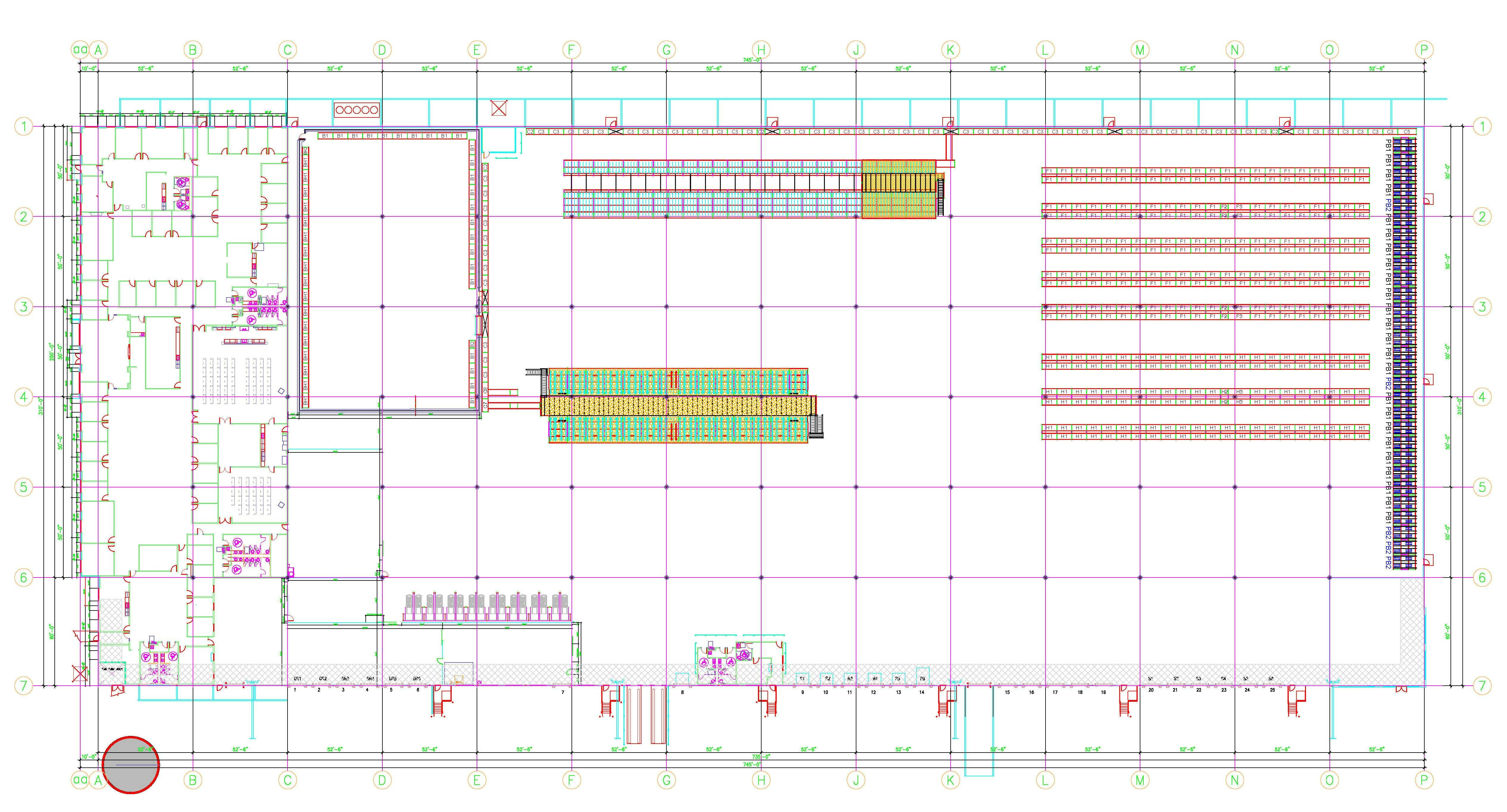
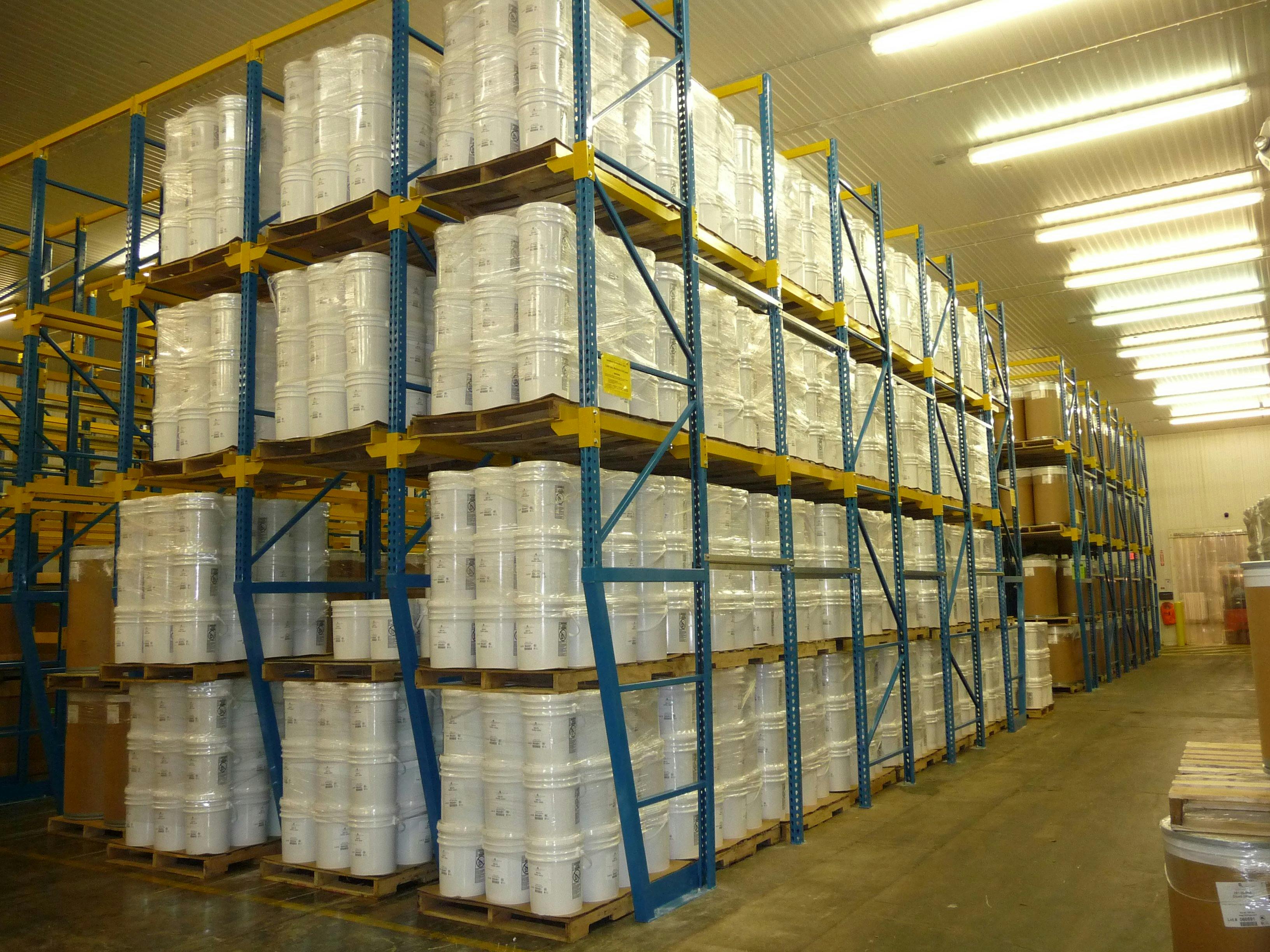
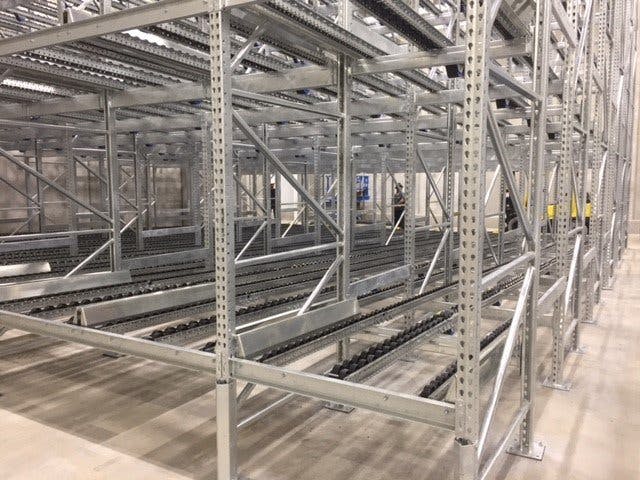
The variety and interchangeability offered pick modules can be scaled to any industry requiring bulk storage needs. Whether you're storing raw materials for manufacturing or goods waiting to be shipped in an e-commerce business, pick modules can efficiently and effectively manage your inventory.
Save Time and Money In Your Warehouse
Pick modules will save you time and money without risking your employees' safety or increasing overhead costs. Our cantilever and push-back racking, platforms, mezzanines, stairs, and safety products give you the tools to create and maintain an efficient and safe warehouse. Consider pick modules for any of these storage based industries:
- E-commerce
- Bulk storage
- Archival storage
3D Thinking in the Retail Space
Pick modules will allow you to keep the inventory you need on-site by using all your space, including your vertical space. Consider racking solutions for any of these sectors of the the retail industry:
- Grocery retailers
- Clothing retailers
- Auto retailers
- Specialty Stores
Maximize Your Manufacturing
Manufacturing faces similar profitability issues across specialties: organization, safety, and work-related injuries. Pick modules and their related components have the solutions you're looking for. Our stainless steel racks, stairs, mezzanines, and safety products will improve your productivity and profitability across these manufacturing sectors:
- Chemicals
- Machinery
- Auto
- Aeronautics
- Plastics
- Construction materials
- Electronics
Lean Distribution Creates Larger Profits
A well-designed and organized storage system allows you to maximize your response time and improve the efficiency of your distribution team. Pick modules are a key player in any organized storage system. Pick modules are the next step for any of these distribution categories:
- E-commerce
- Global logistics
- Third-party logistics
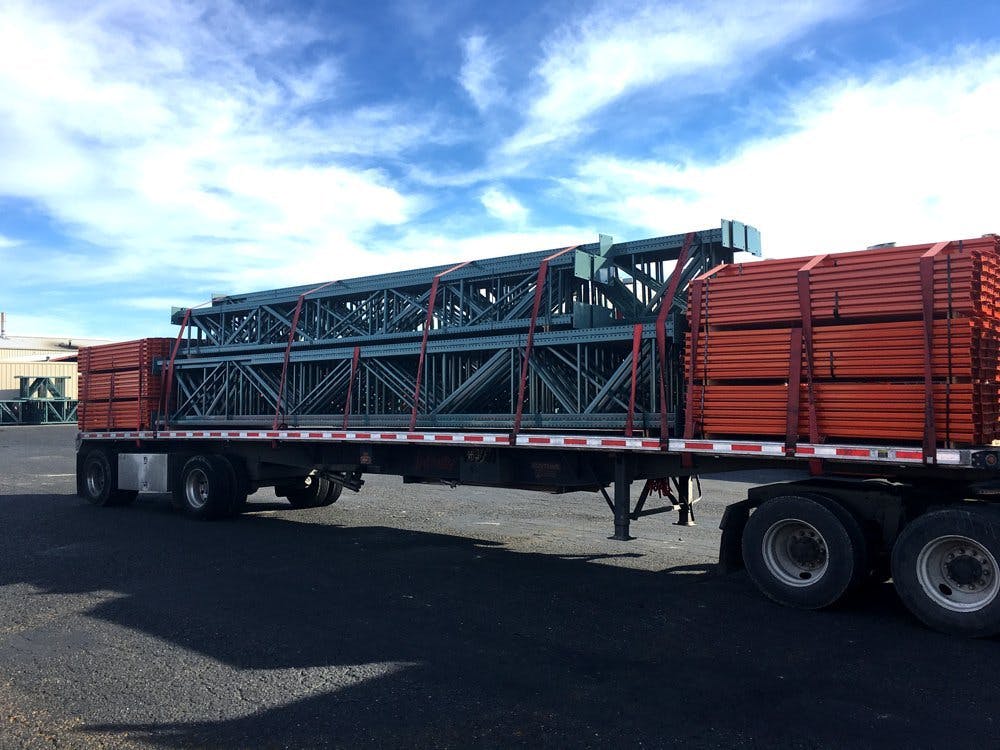
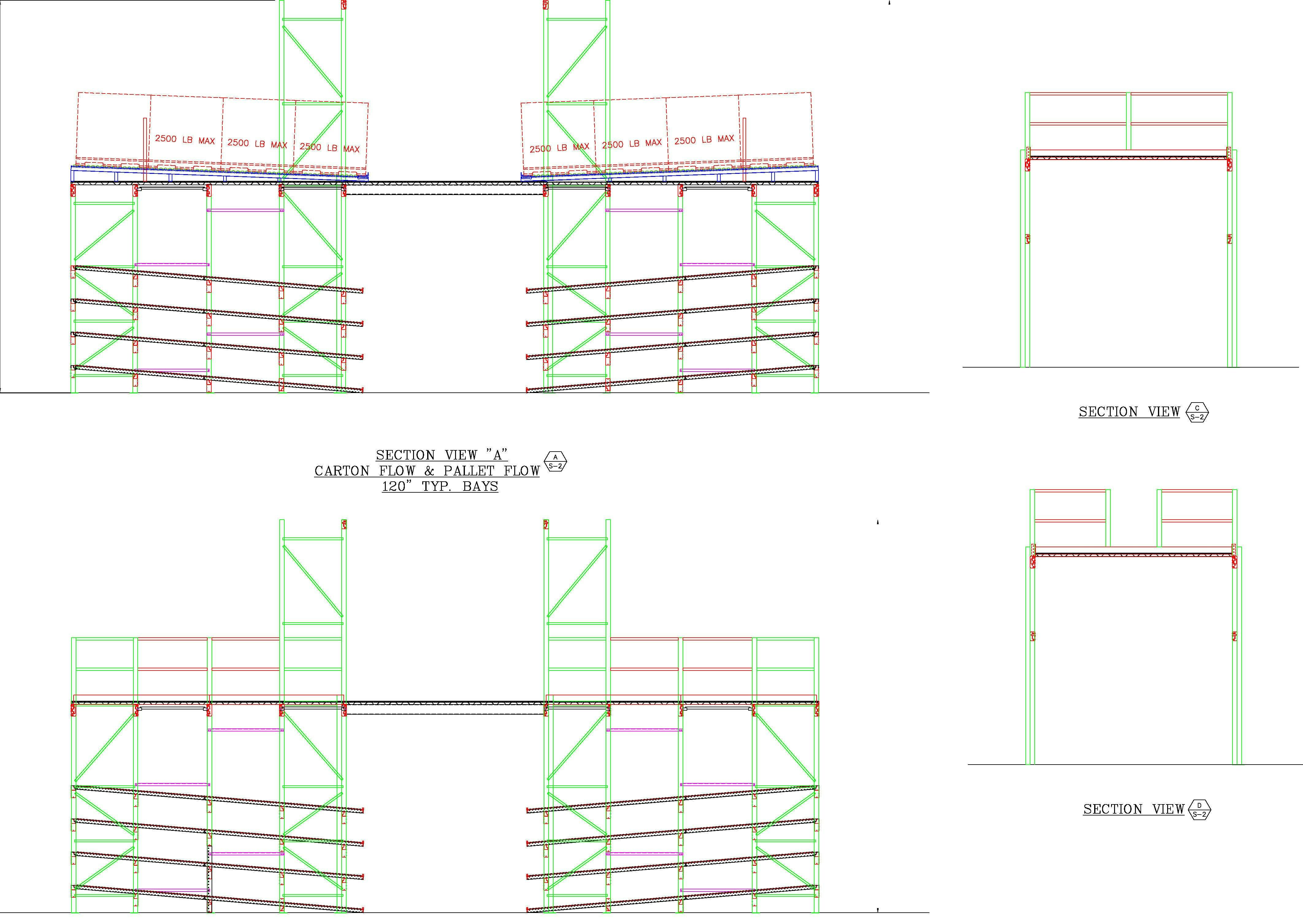
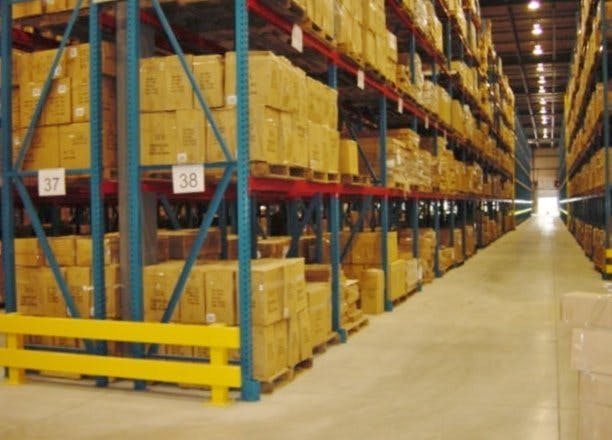
Lean principles and pick module systems go hand-in-hand. The Lean Method, originally developed by Toyota Chief Engineer, Taiichi Ohno, introduced as part of the Toyota Production System (TPS), reduces waste at every stage of production. The push for a lean facility creates a more efficient and profitable parent organization.
One of the key components of lean production is an organized and planned space, whether you’re a manufacturing facility or distribution center. A custom designed pick module system can create the structure to implement a lean system warehouse or facility. Ohno defines seven wastes that lean principles do away with. Six of the seven wastes of manufacturing can be solved with efficiently planned pick module systems and employee training changes.
Transportation
Transportation refers to the waste of taking people, material, or product needlessly from one space to another. Push-back racks allow for condensed storage areas, and vertical SpaceRAKs keep material and inventory easily accessible. Plus, appropriate aisle planning allows for work stations to be set up at regular access intervals.
Inventory
Excess inventory in lean production can be physical products or materials, files from filing systems, and improperly used databases. What these have in common is lack organization and data to decide how much inventory will sell, how many materials will be needed for production, and a CMS that don’t truly suit the needs of an operation. Using pick modules will allow for easy scanning of SKUs for daily inventory and analysis, storage for exactly what you need, and easy production to distribution transportation to eliminate finished products lingering longer than needed.
Motion
Unnecessary motion applies to people, machinery, or equipment. Much like other lean principles, minimizing unnecessary motion, which prevents wear and tear on machinery, workplace accidents by employees, and damage to products or materials being moved without true need, creates efficiency, and increases profitability. You can’t minimize wasted motion if you’re not using vertical space to store SKUs, using cantilever racking to keep oversized objects in easy to find places, or creating racking systems that work together to create efficient flow in your space.
Waiting
This is the clearest waste of business cash in the form of employees waiting for next steps or equipment laying idle because of low production. While a pick module may not change your production process, it can help eliminate space between machines, minimize walking time by employees, and keep materials easy to find and use. All three of these uses minimize waiting by employees and equipment.
Overproduction
A pick module can facilitate a physical setup change from linear to cellular production. A conveyor system, outlined with with safety rails and post protectors can distribute materials to multiple production cells. The interchangeable nature of pick modules means you can keep like with like at each production cell, making sure materials are available at the right stage of each process.
Over-processing
Avoiding over-processing means knowing you customer to create a production or shipping method that delivers exactly what they need, no more and no less. Any extra steps or features unneeded by the customer are just that, extra. All our pick modules, from push-back racks to roll-formed racks make SKU scanning easy, to routinely evaluate what clients actually need, and determine if steps, features, or items can be dropped from production.
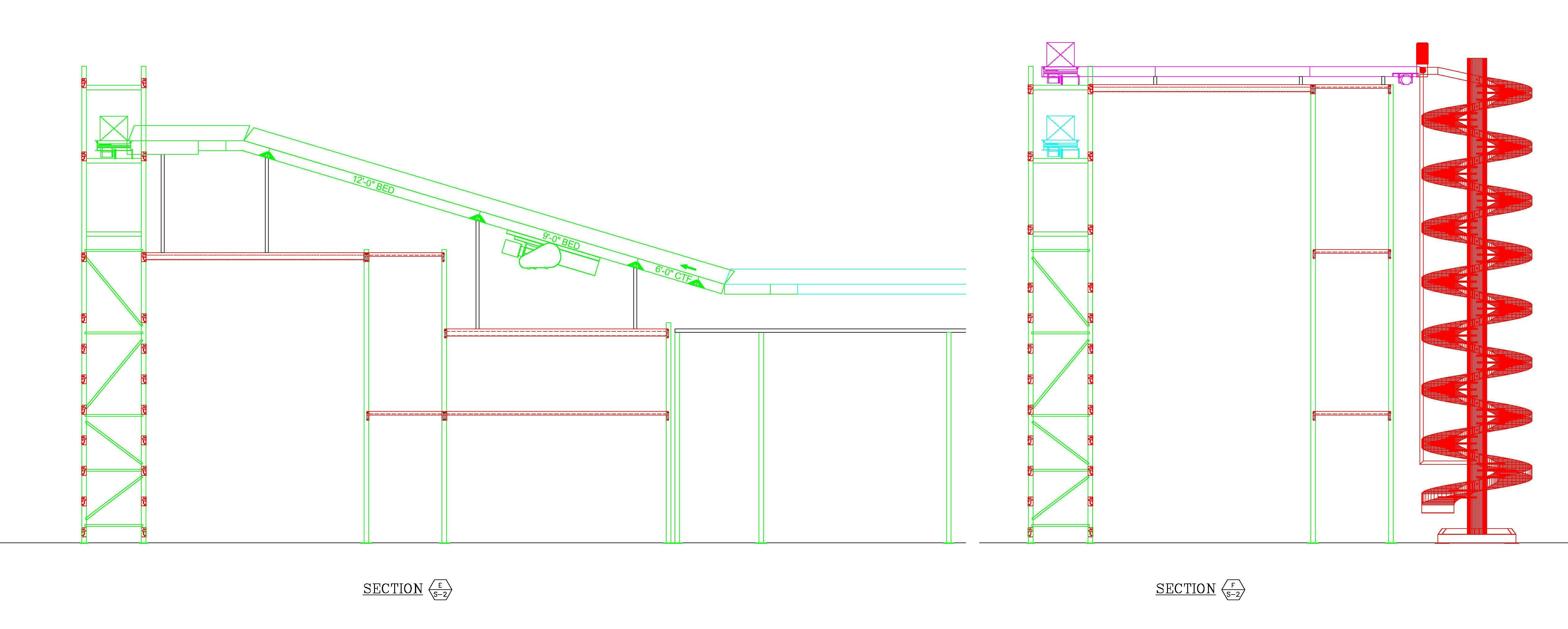
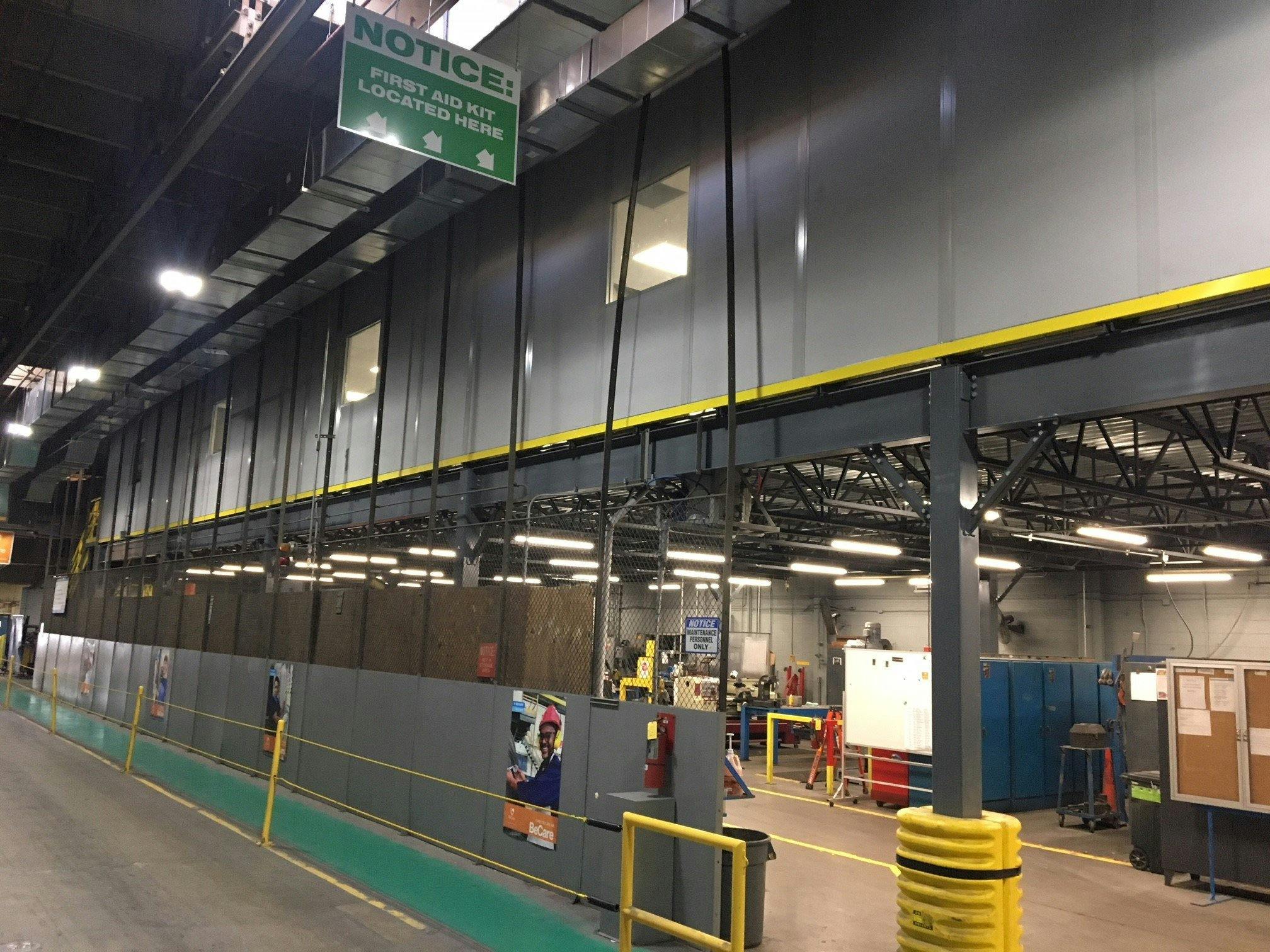
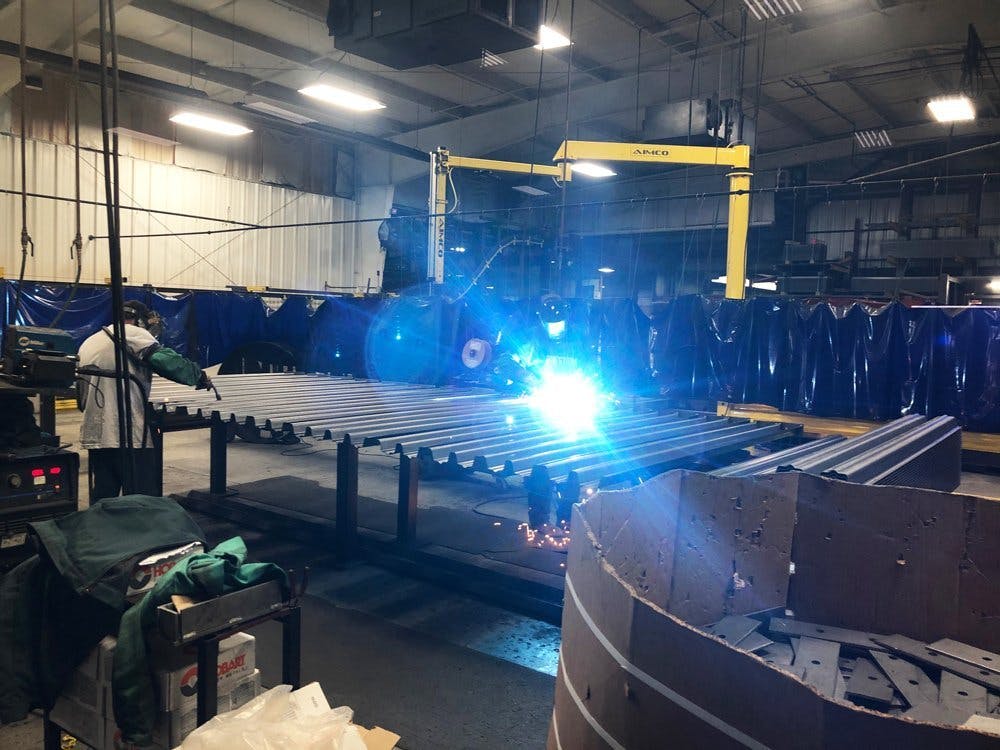
Keeping a clean warehouse or manufacturing facility is always an ongoing struggle. Between pick units constantly in motion, employees working with inventory, and trying to stay efficient, there’s always room for improvement. But, while cleanliness has often taken a back seat to day-to-day operational issues, with COVID-19 related health concerns, keeping a clean facility is key to employee and client health, and staying afloat and competitive in the current economy.
Solutions Because Material Handling Can't Be Done Remotely
Recent studies show that COVID-19 is stable on surfaces for hours or days. And that COVID-19 spreads person to person, including via aerosol particles in the air. As a business owner with jobs that are not able to be completed remotely, this means taking precautionary measures to ensure employee and client safety. And in a warehouse or manufacturing facility where everyone is moving around and touching surfaces, that can be an ongoing challenge.
Pick Modules Minimize Exposed Surfaces
The key to efficient cleaning is minimizing exposed surfaces. Lean organization methods recommend better racking organization to keep debris from gathering on surfaces and to keep picking units from sitting haphazardly. A pick module system using vertical racking and pushback racks will keep your pick units organized and off the floor. This also allows cleaning crews to quickly access all touchable surfaces. This is key with metal shelving, where the virus can live for multiple days.
Pick Module Minimizing Employee Exposure and Overlap
Remote work has made it significantly easier for people to social distance and minimize group exposure to COVID-19. Unfortunately, many essential jobs cannot be done remotely, including manufacturing, distribution, and ecommerce support. Using pick modules to redesign your workflow will keep employees safe distances apart and keep efficiency at pre-COVID levels. Structural racks and strategically placed safety rails keep employee work stations separate from the rest of the warehouse. Organized pallet-flow racks also shorten time spent retrieving units and minimize extra surfaces touched.
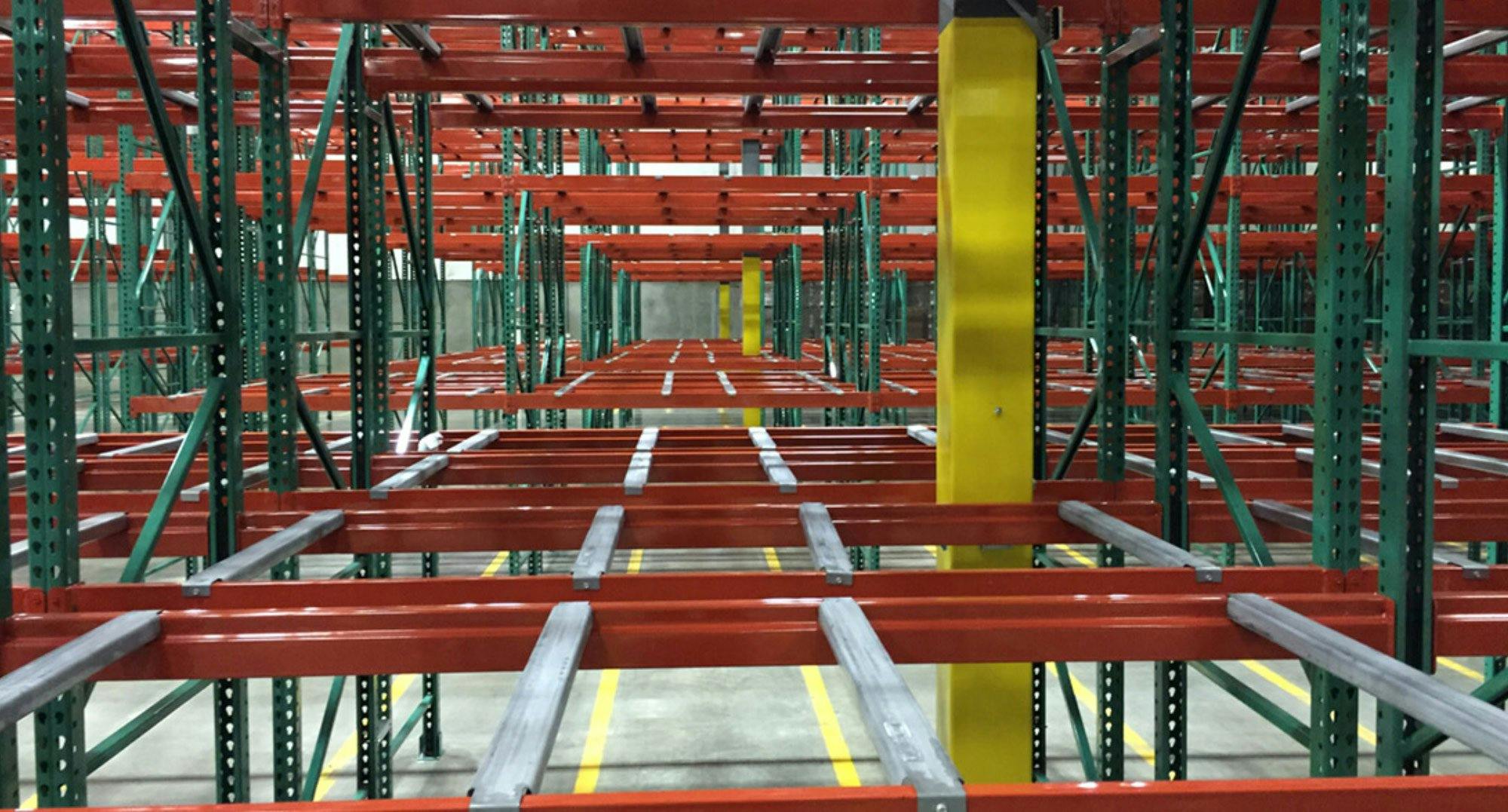
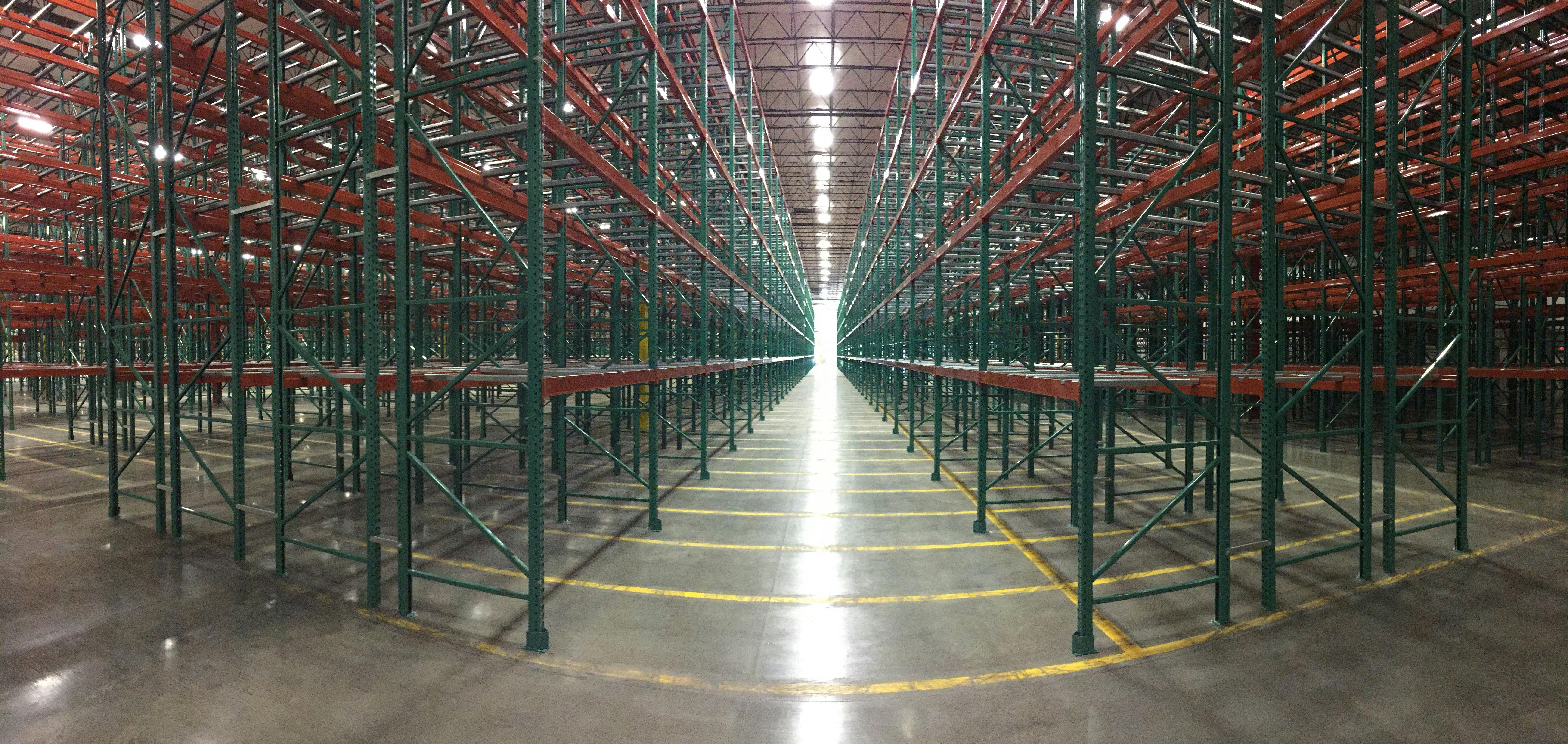
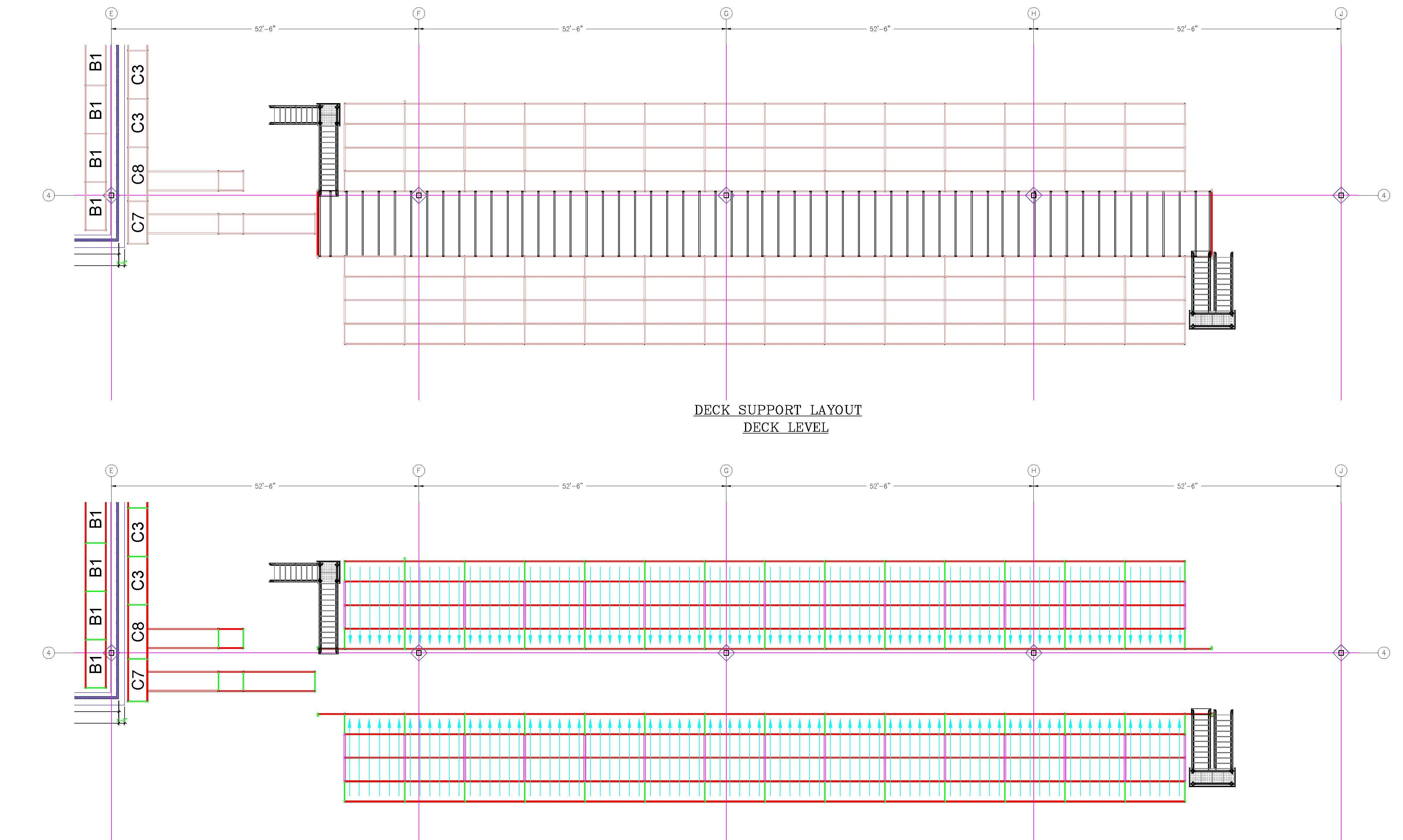
Modern logistics require speed and accuracy that traditional racking products can’t deliver. And proponents for traditional racking systems tend to focus their complaints on specific pick modules, rather than looking at the benefits of whole systems.
Warehouses require planning for employees to easily access stored goods. Manufacturing facilities require cellular or linear organization methods to minimize product and employe movement times. E-commerce hubs require easy access for SKU scanning and tech integration. Distribution centers require lanes wide enough for heavy machinery like forklifts, space and planning for easy access to packages, and space for employee workstations.
Traditional racking products may provide for a basic version of these issues, but fail to provide moveable deep storage and efficiently utilize vertical space.
Cantilever Racks Create Space
Cantilever racks don’t take up space, they make it, vertically. Yes, pick module racking systems need space. But, what organization system doesn't? Finding space to store products, packages, or production materials is simply a part of doing business.
While traditional racking may boast using less square footage, traditional racking doesn't utilize vertical space for hard to fit SKUS or materials. Cantilever racking gives hard to stack objects a place to stack, off the floor. This allows you to take advantage of existing vertical space. It also contributes to a clean and organized warehouse space, maximizing worker efficiency.
Drive-In Pallet Racks: A Safe, Efficient Choice
Drive-In pallet racks aren’t any less safe for personnel or materials. Like any product in an active work space, there is always a possibility of damage. Experienced, trained forklift drivers and organization geared toward usage can minimize damage. OSHA work place safety protocols require all forklift drivers to complete training that includes safe forklift operations, type of vehicle/forklift being used, hazards created by forklift in the work place, and OSHA safety requirements fork lift standards. This, paired with mentoring by another driver, experienced with your facility will help maintain longevity of your drive-in pallet racking.
Another concern often voiced about drive-in pallet racks deals with ease of access for center units. Easy access looks like sider aisles using a systemic approach to what goes where. Applying common sense and good training minimizes risks and allows for the creation of innovative, space-saving workplace systems.
Pushback Racks Extend Usable Space by 90%
Pushback racks are the smart answer to small square footage because they can extend usable space by 90%. Set up with accordion-style sliders, pushback racks more than make up for any square footage lost in their setup. The mechanized accordion sliders eliminate the need for aisle space between every row of racking. This can save you 90% of previously used floor space. And while differences in setup may not give as many unloading/loading points as traditional racking systems, planning and purposeful placement makes this a non issue. By using a last-in, first out style storage system and taking time to think through the need for employee access, you can make sure that often used items are in front facing racks. You can also set up multiple racking systems to allow access to multiple sections at once. Pushback racks may have fewer entry points, but allow 90% more usable space.
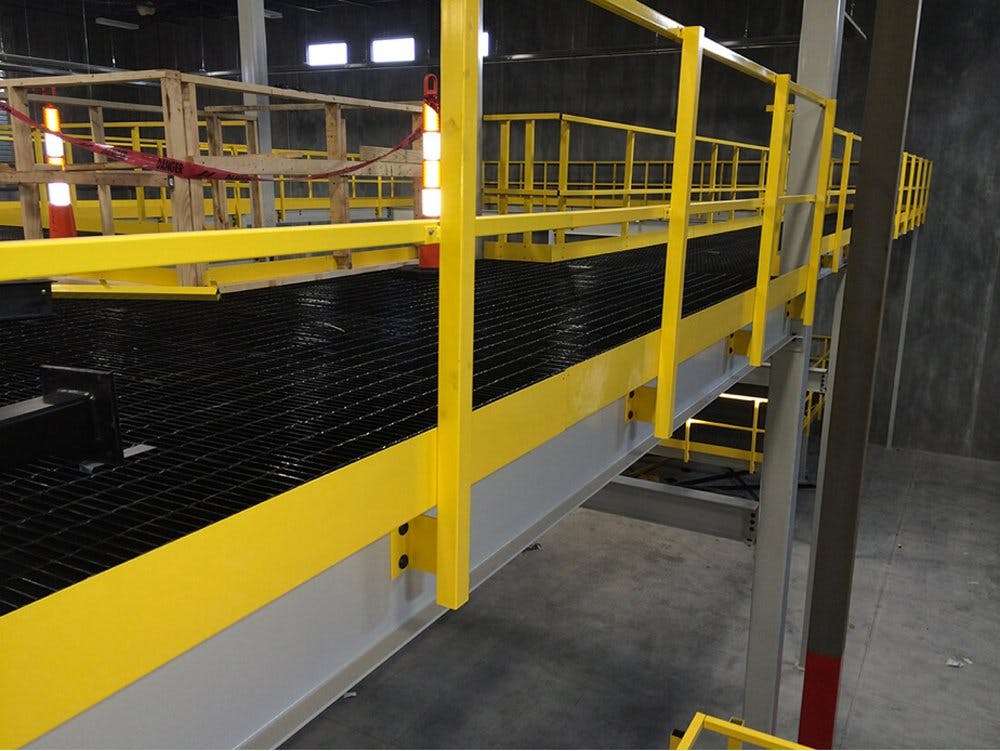
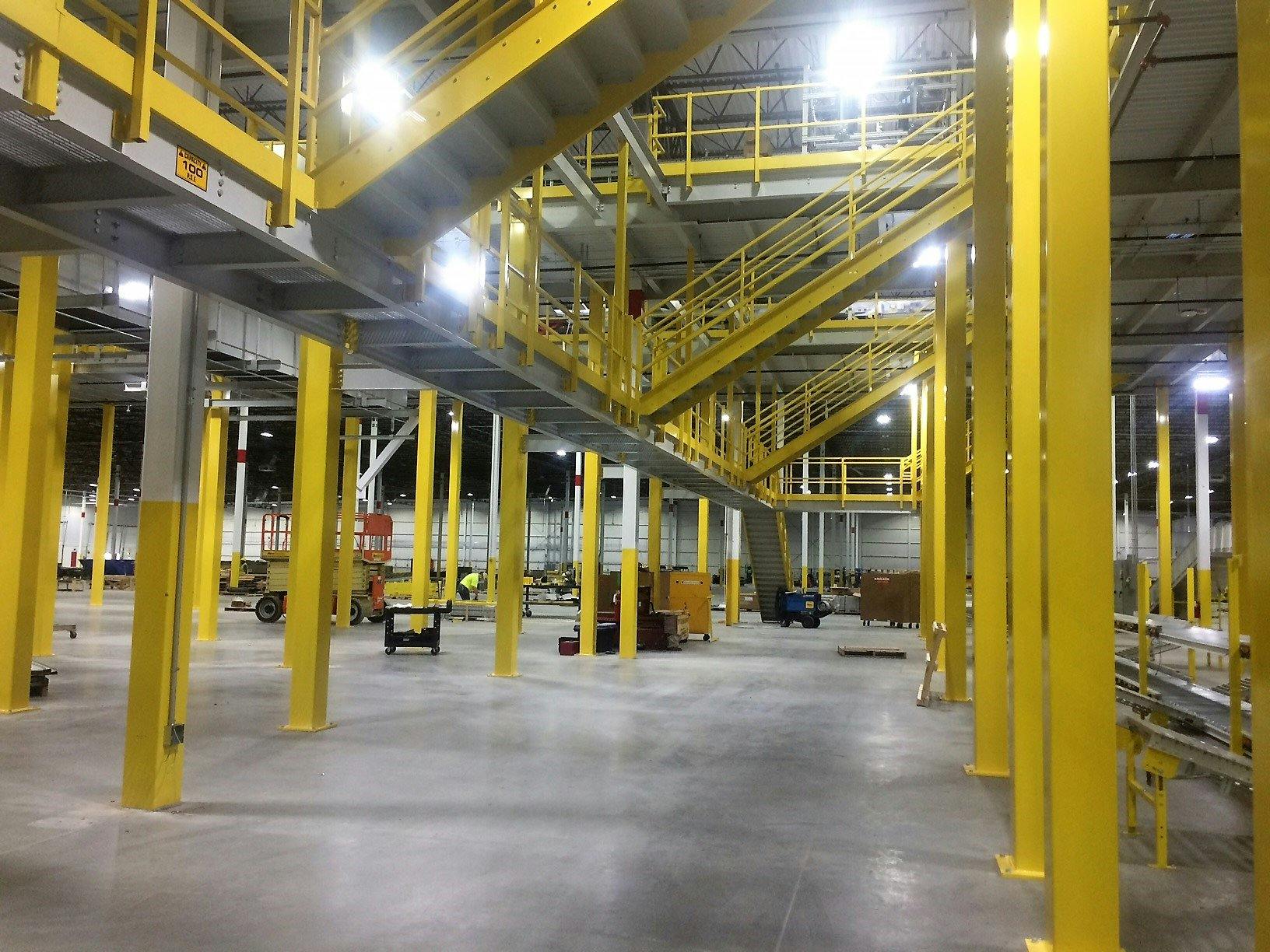
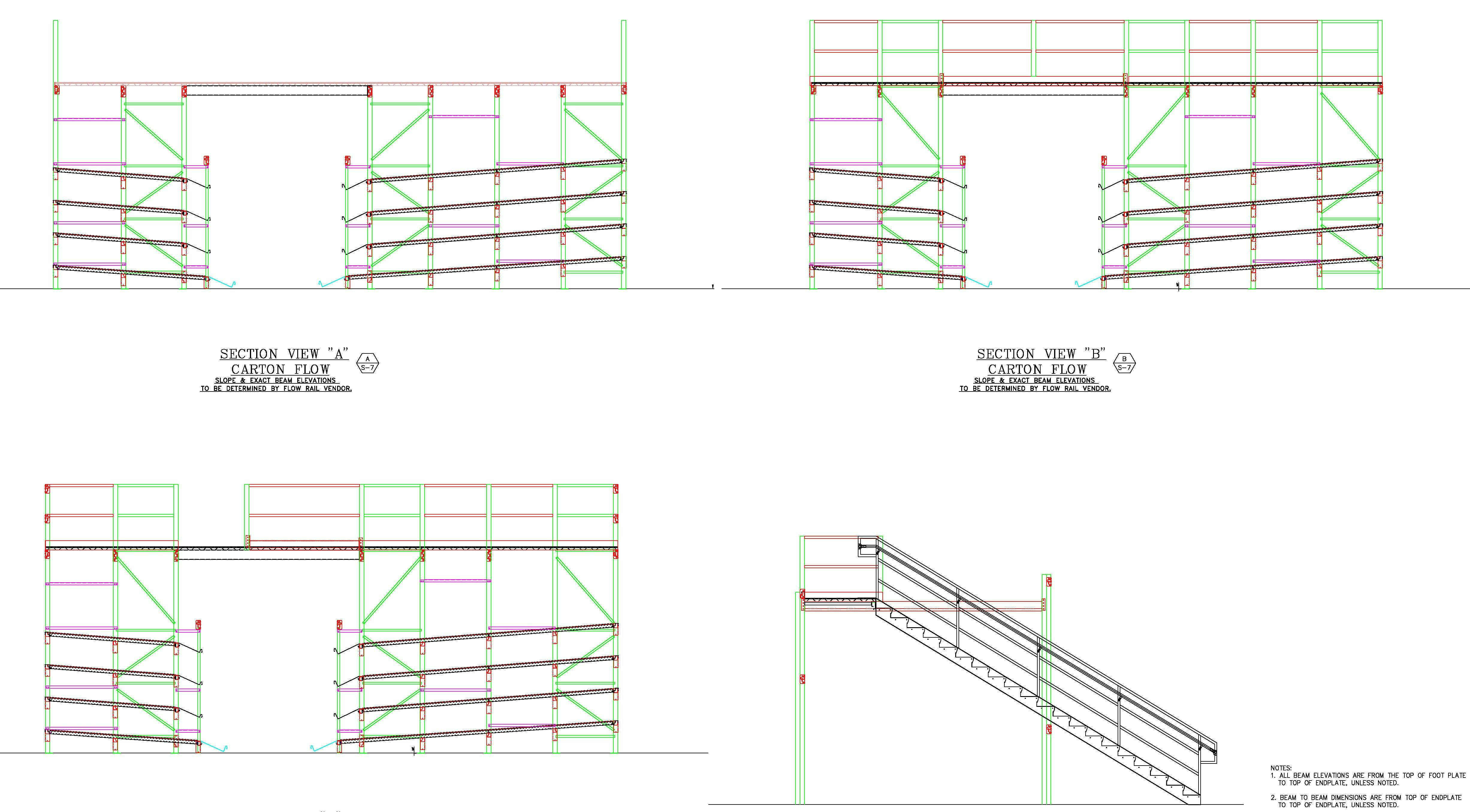
It's more important than ever to stay competitive and keep costs down. SpaceRAK interchangeable pick modules can store any SKU or material and give you a competitive edge in a tough market.
- Versatility - Pick modules work with each other and your existing space. Whether you're looking at equipping an entire campus of warehouses or better using your retails storage space, there's a combination for your space.
- Minimize work place accidents - Statistically, 5 out of every 100 warehouse and storage employees will experience days lost to injury or other issues. Using any pick module, roll formed racking to cantilever, to create organized inventory and clear walking spaces will keep your employees safe at work.
- Maximize vertical space - Racking systems allow you to fully use your whole facility, not just floor space. This can allow more operating room for forklifts or space for conveyor belts, all while letting you maximize product storage.
- Longevity - Our American made steel racking systems are made to last. They'll stand up to daily wear, heavy products and materials, and occasional dings from new forklift drivers. Choose to plan and buy once.
- Integrates with technology - SpaceRAKs create a base for organized systems that allow for easy display for the processes you've already automated—like scanning barcodes.
